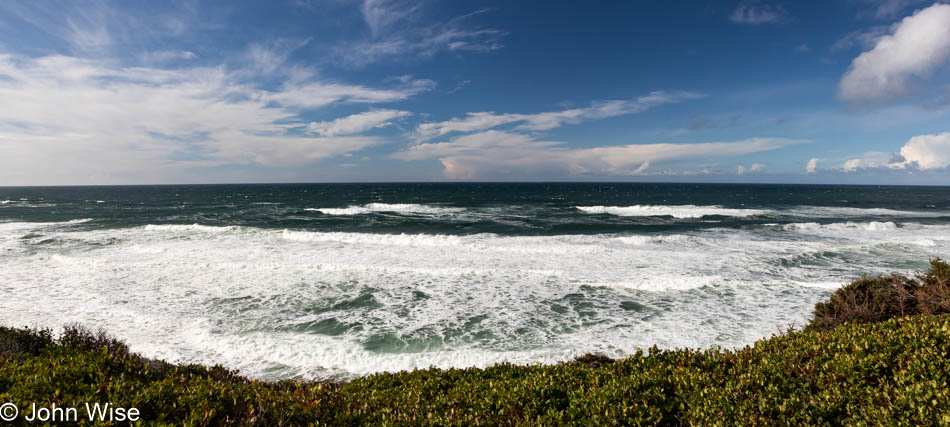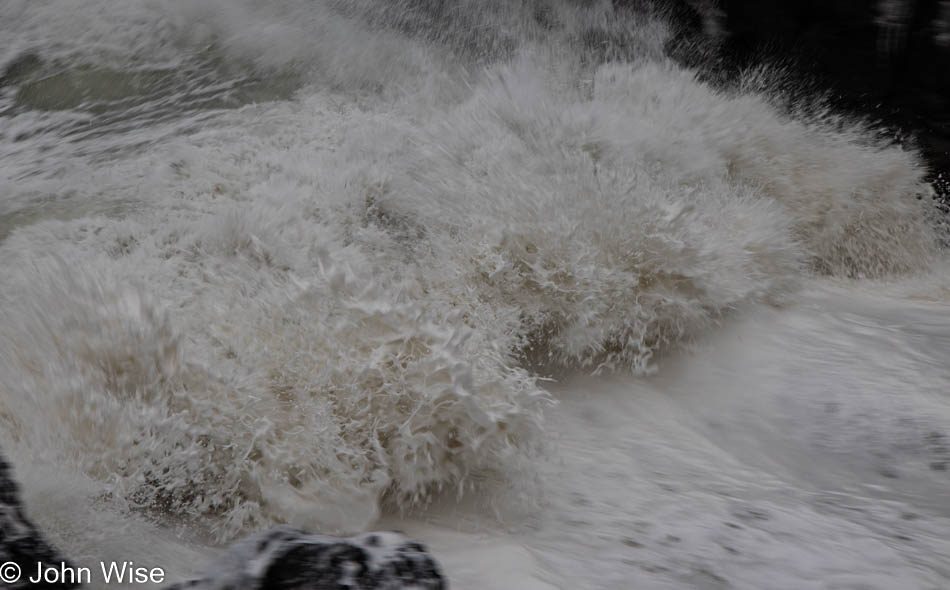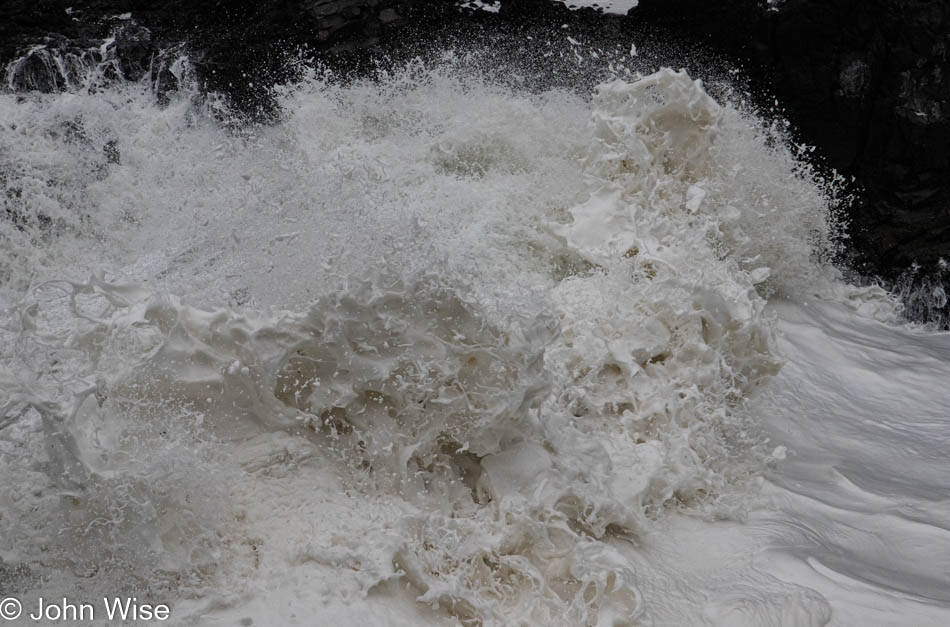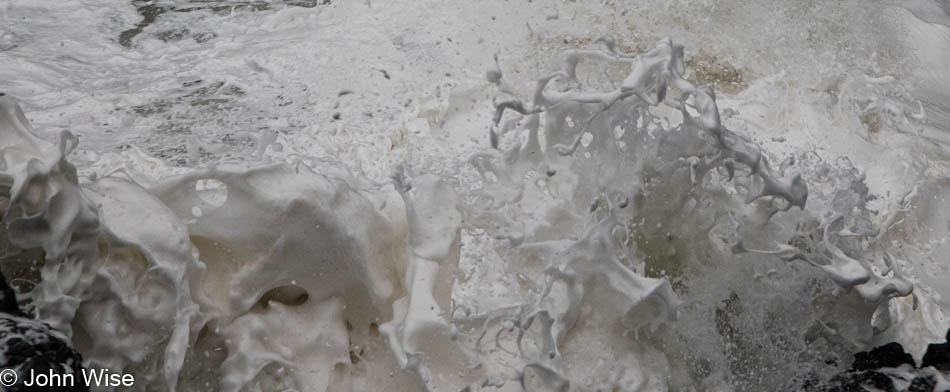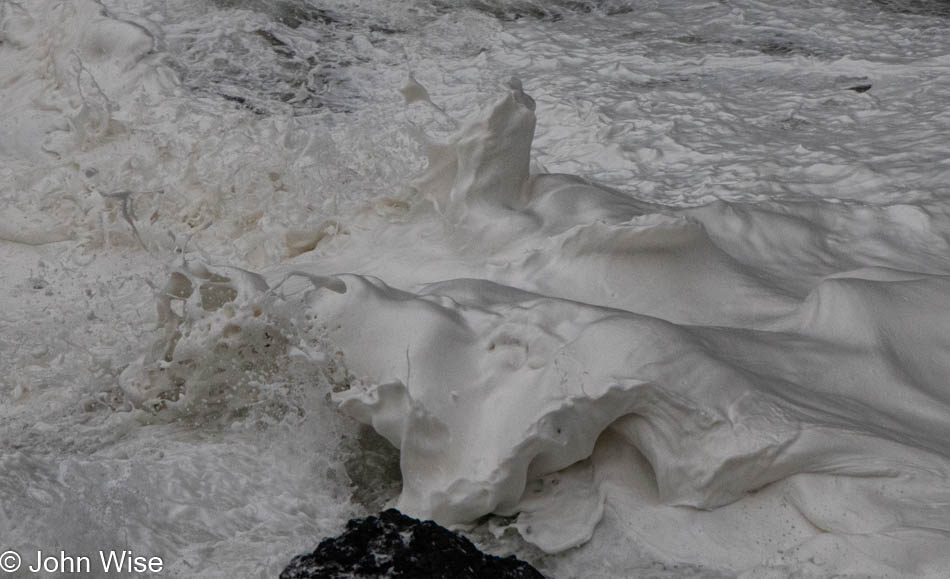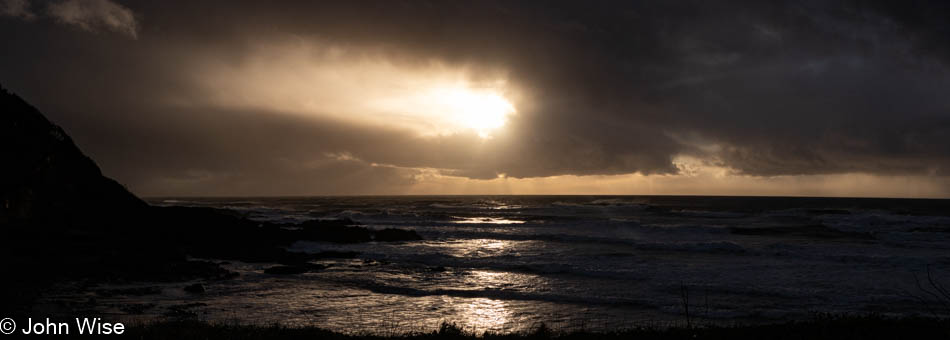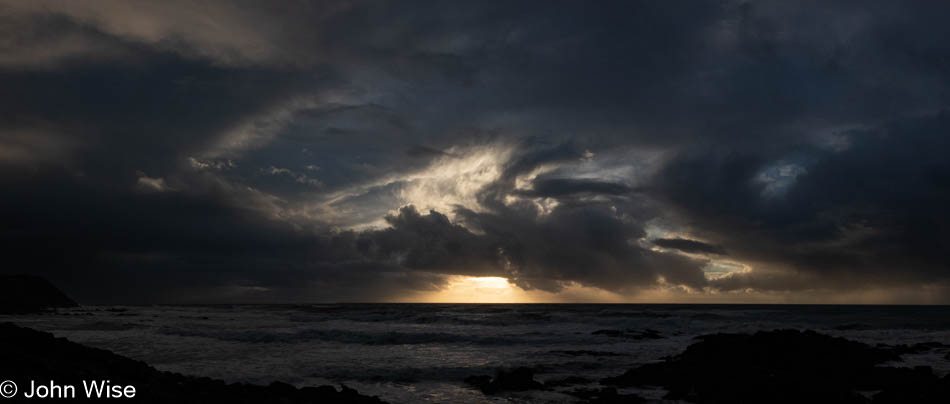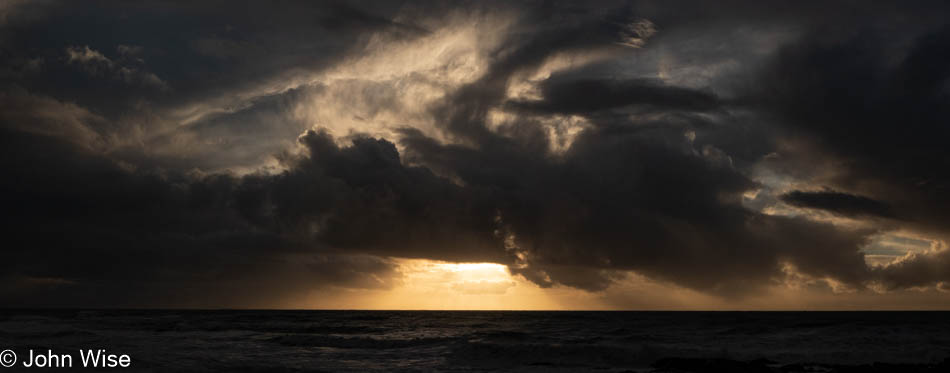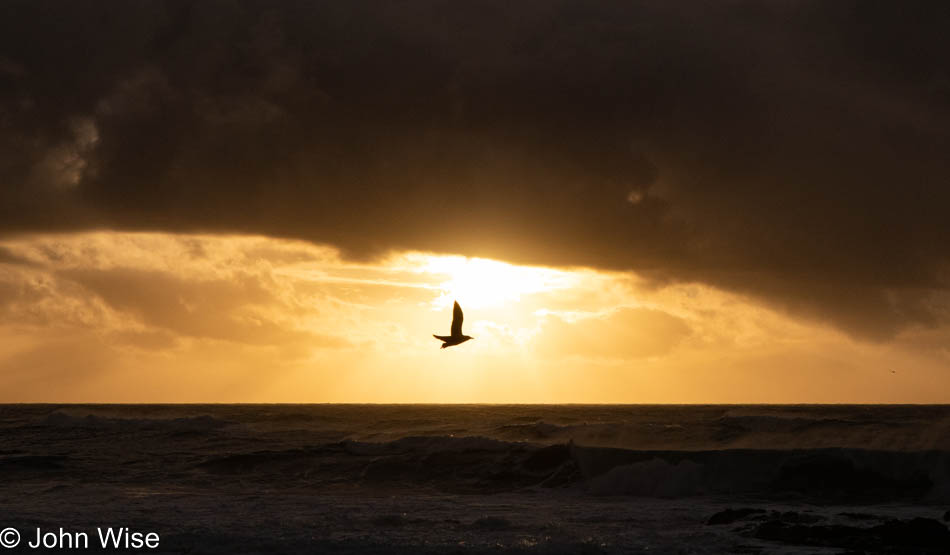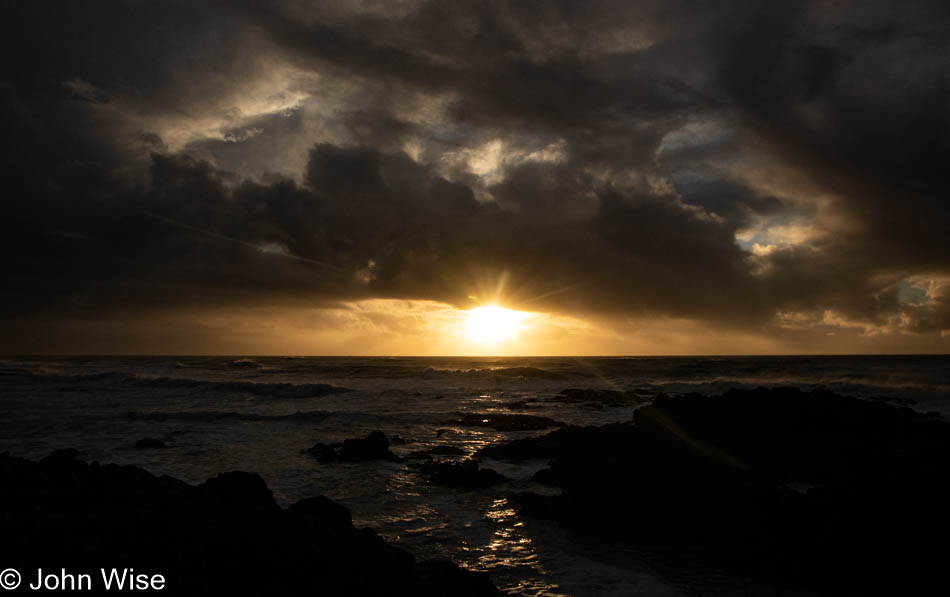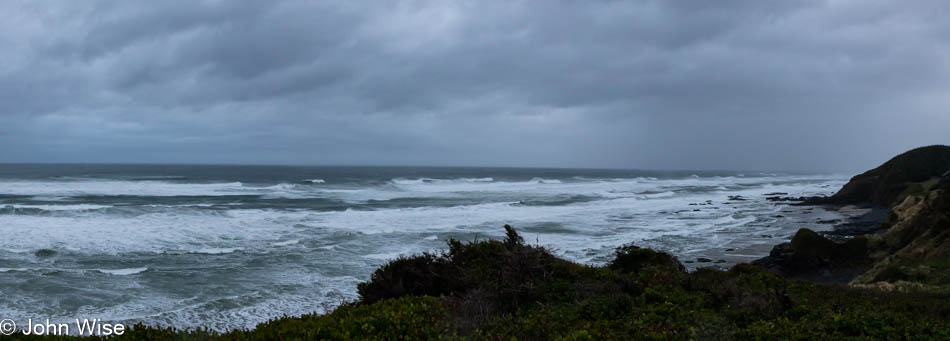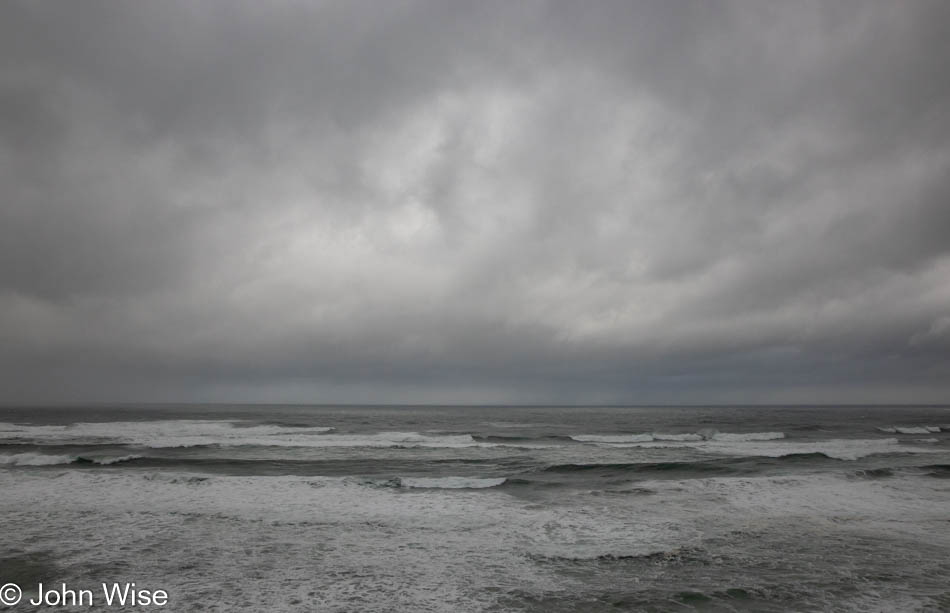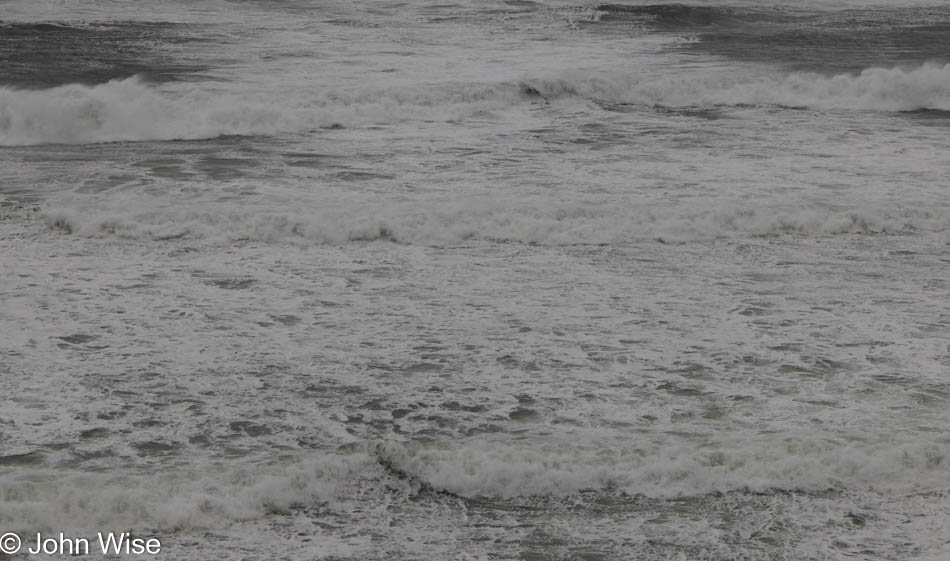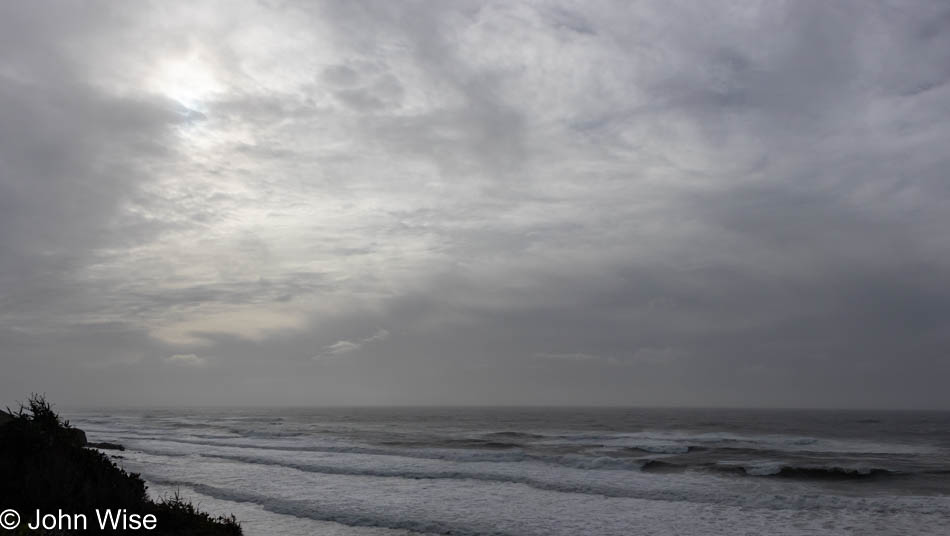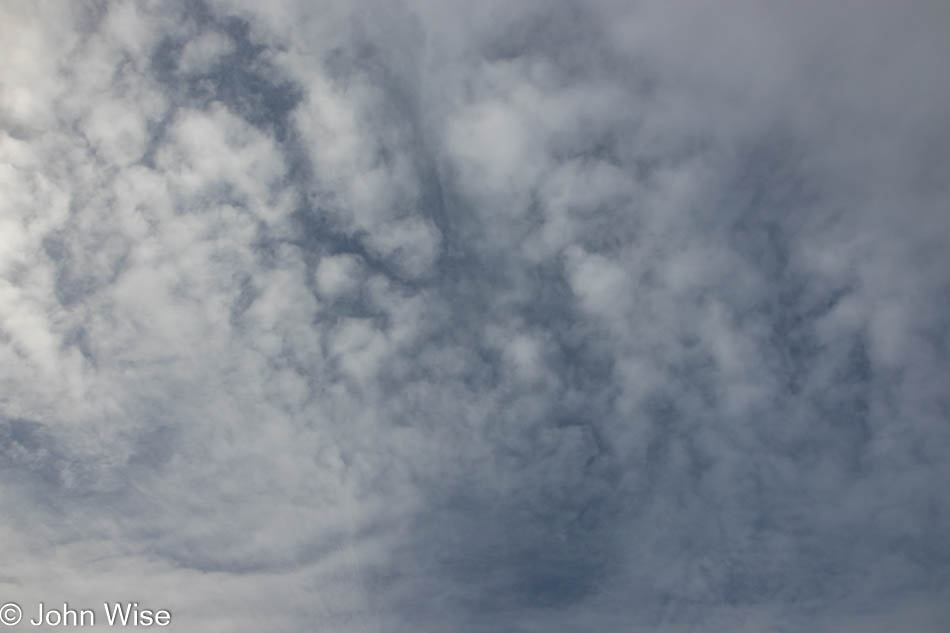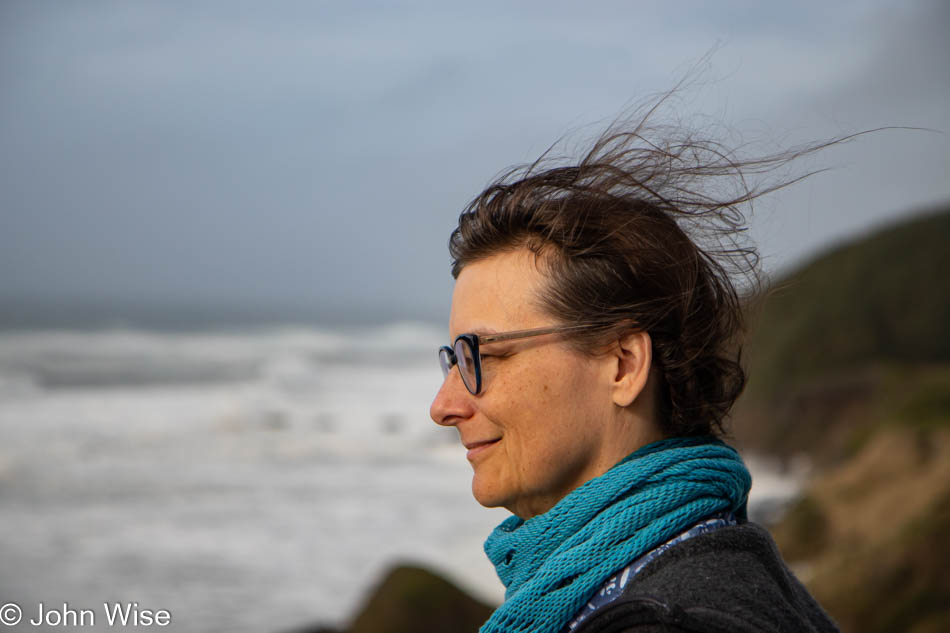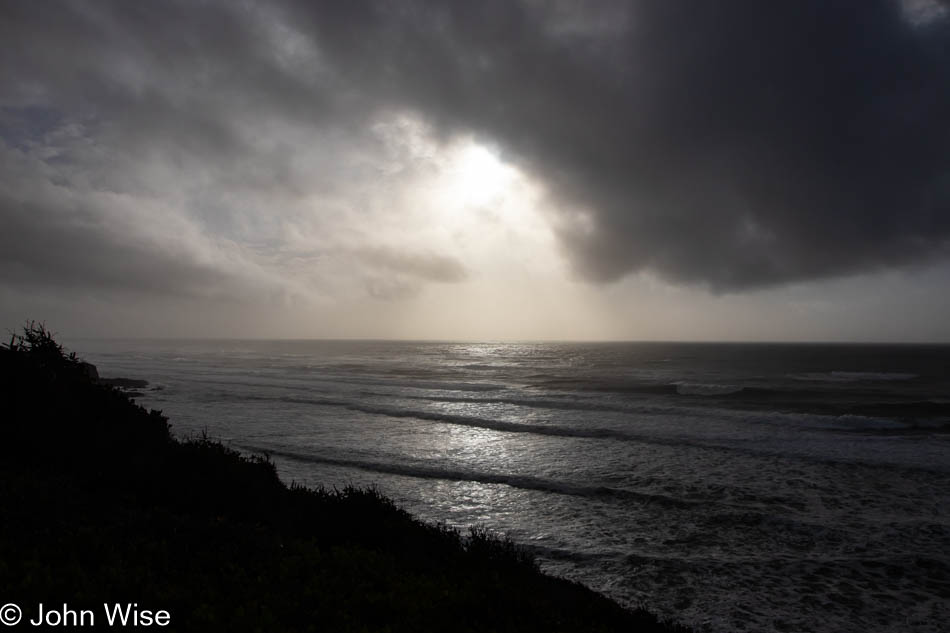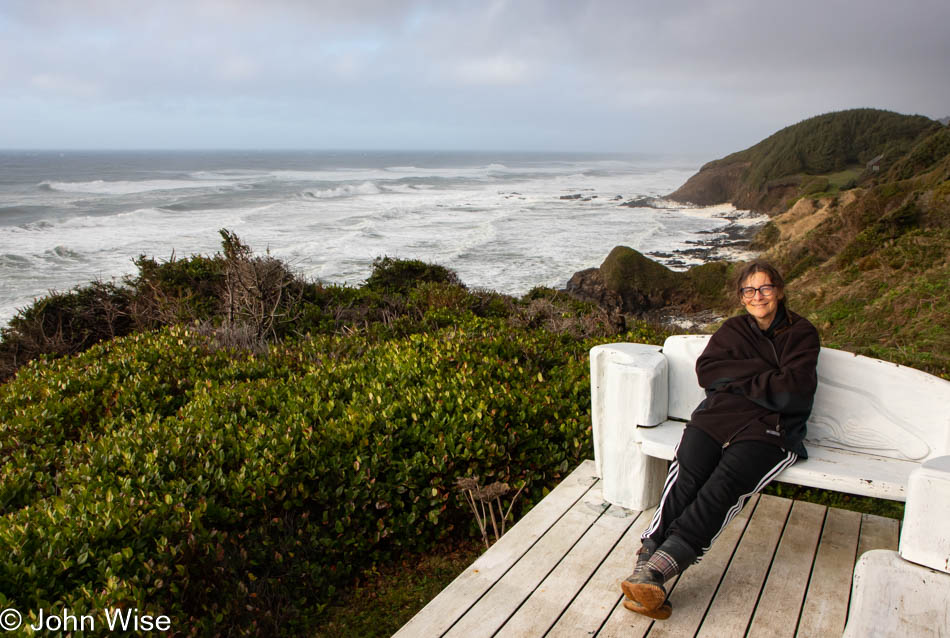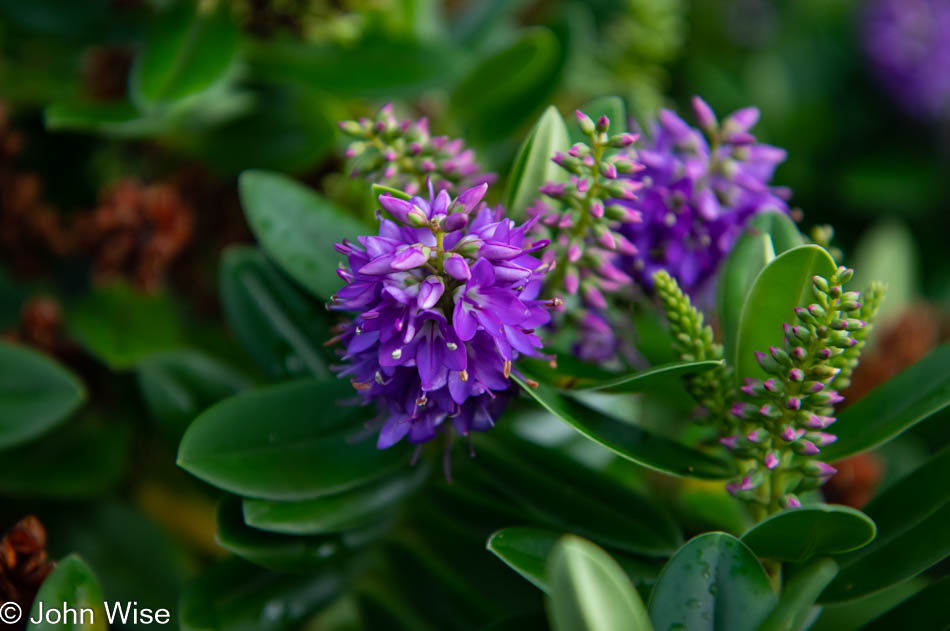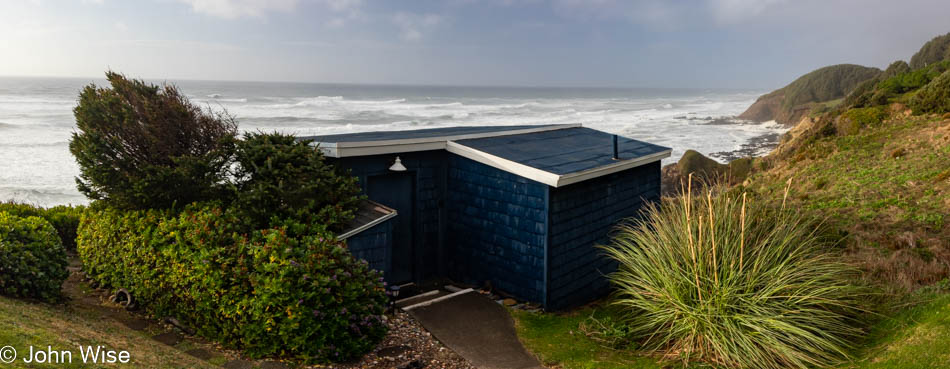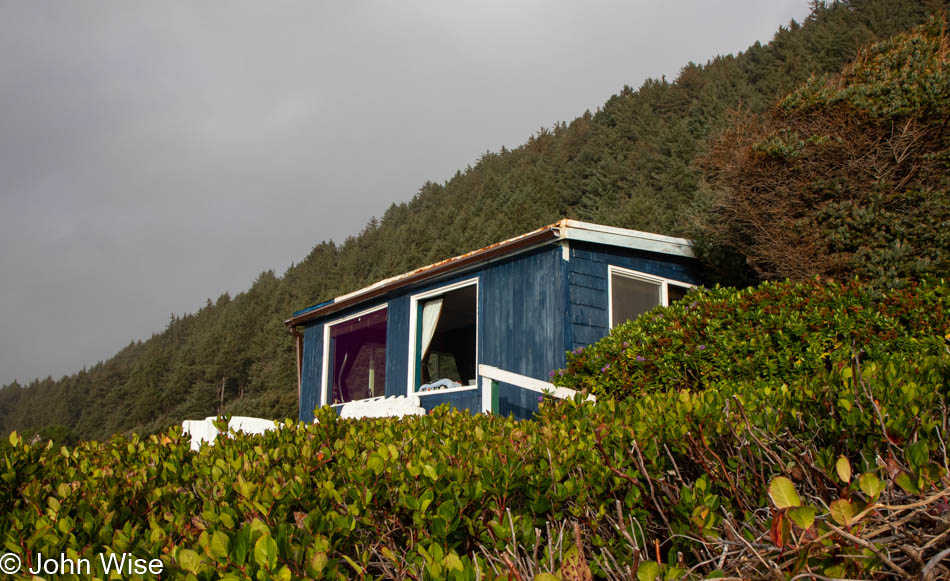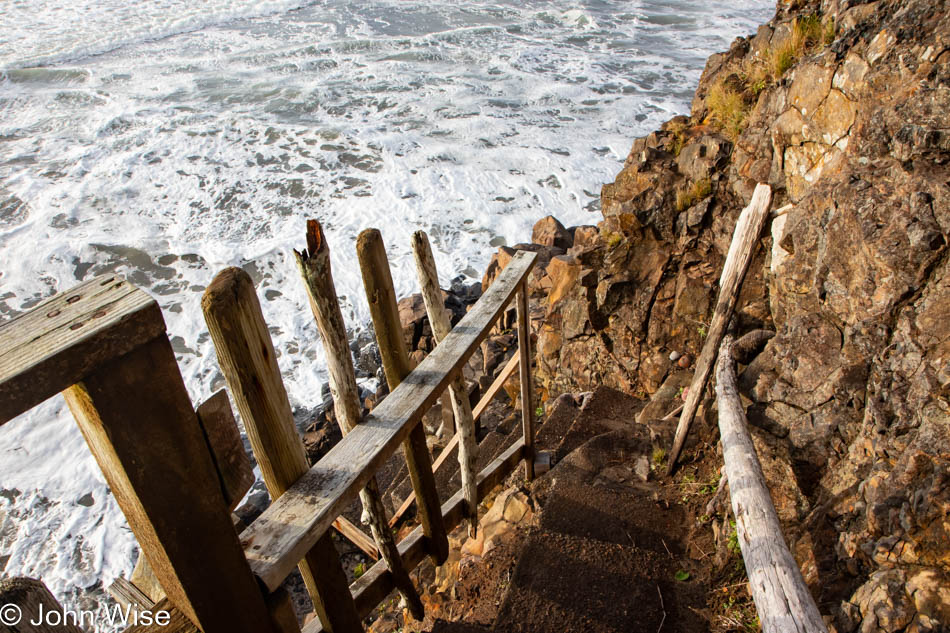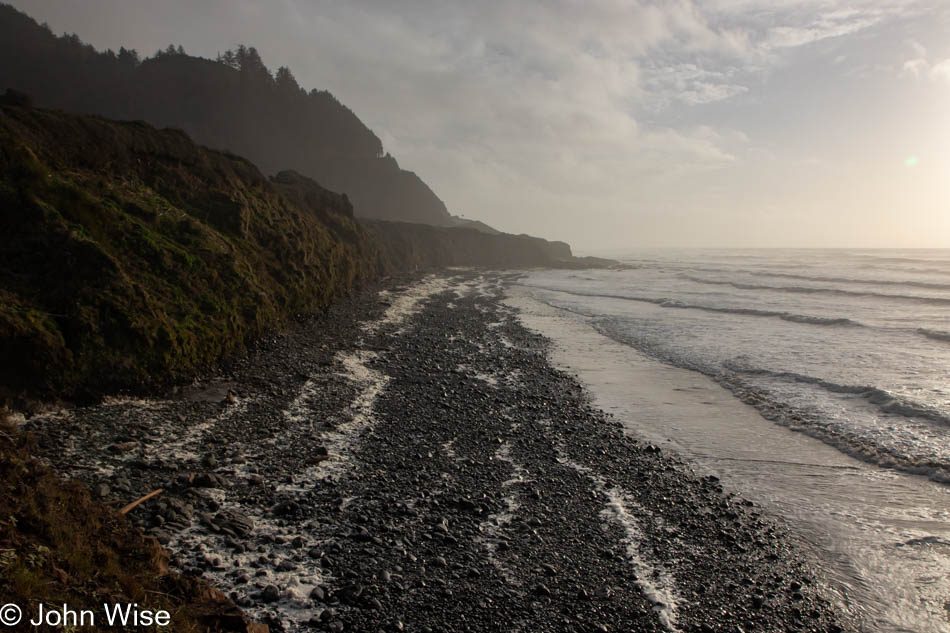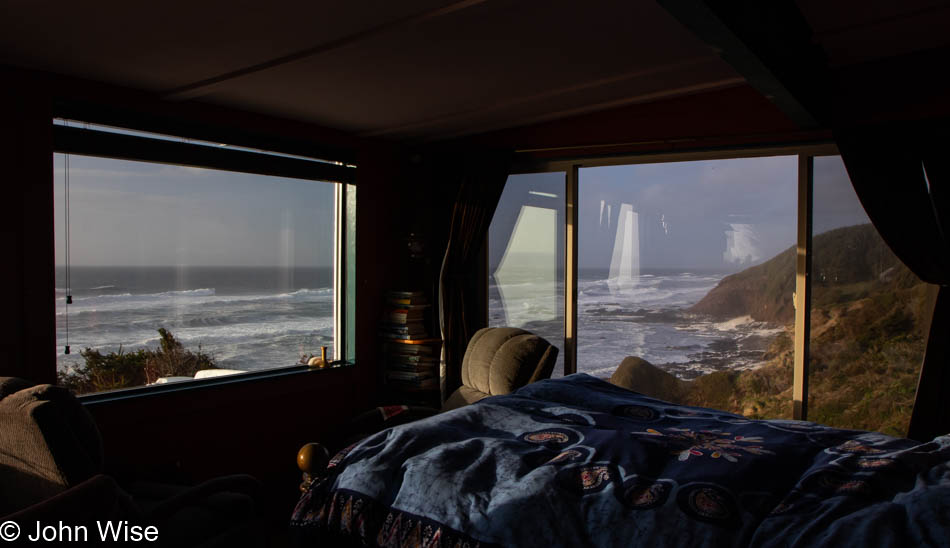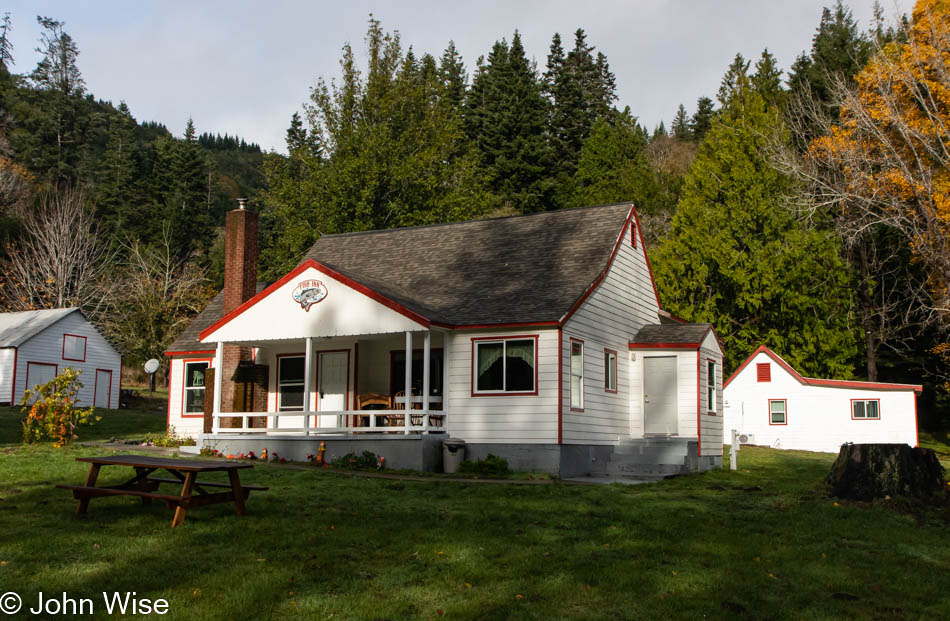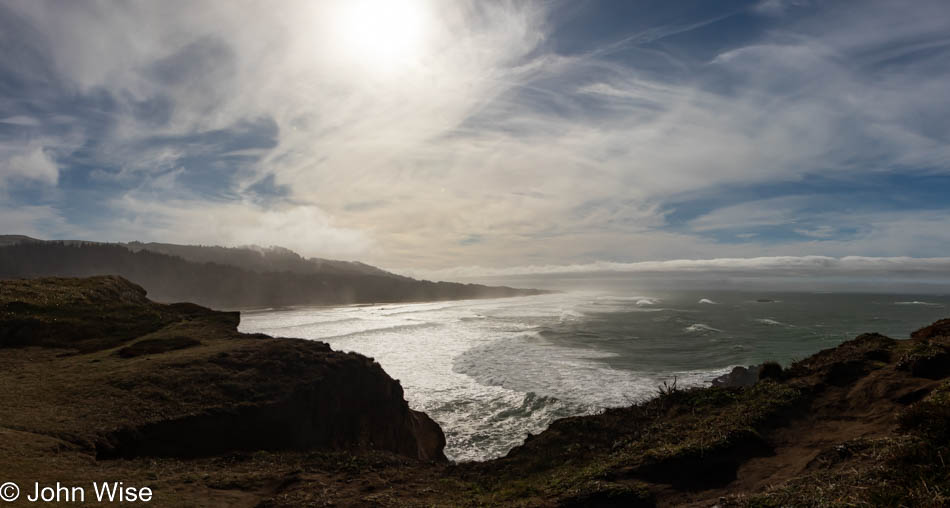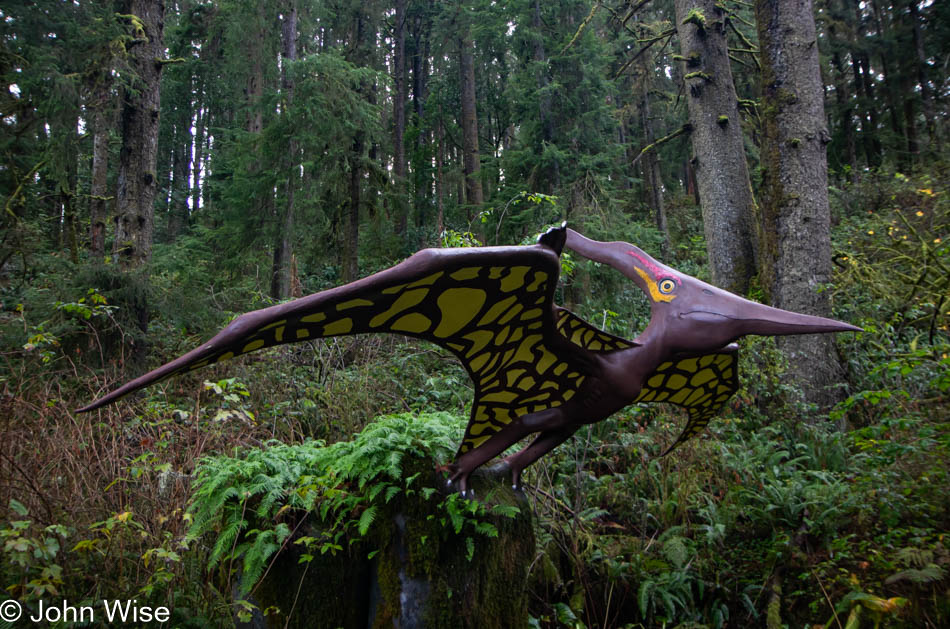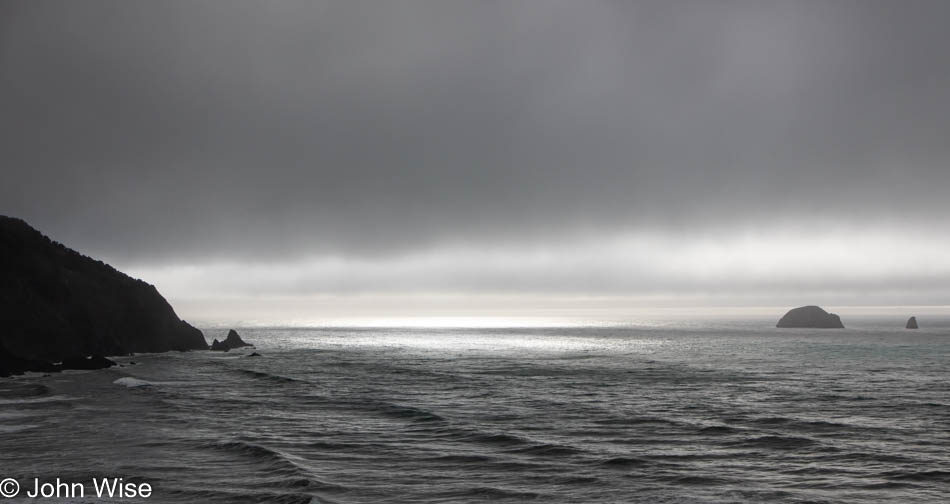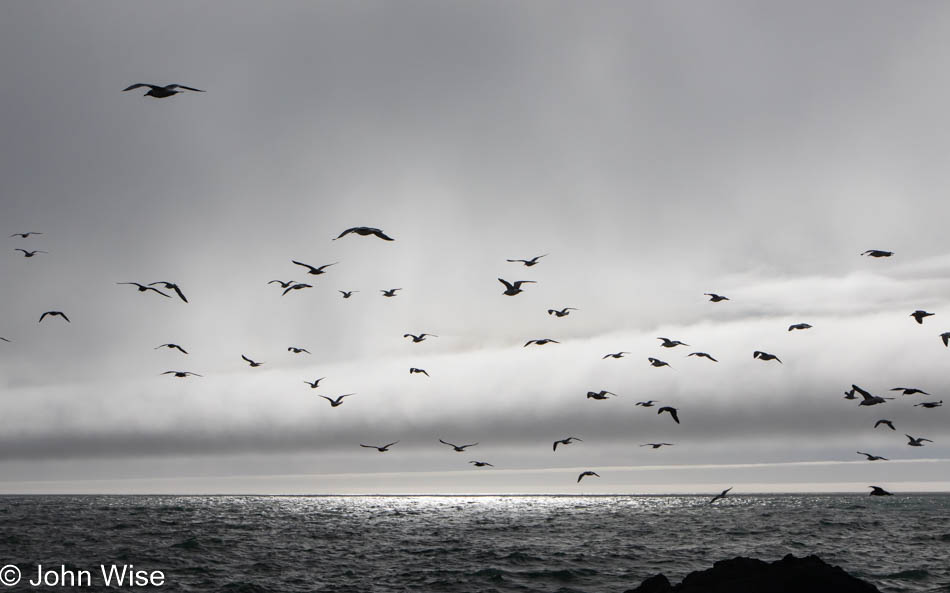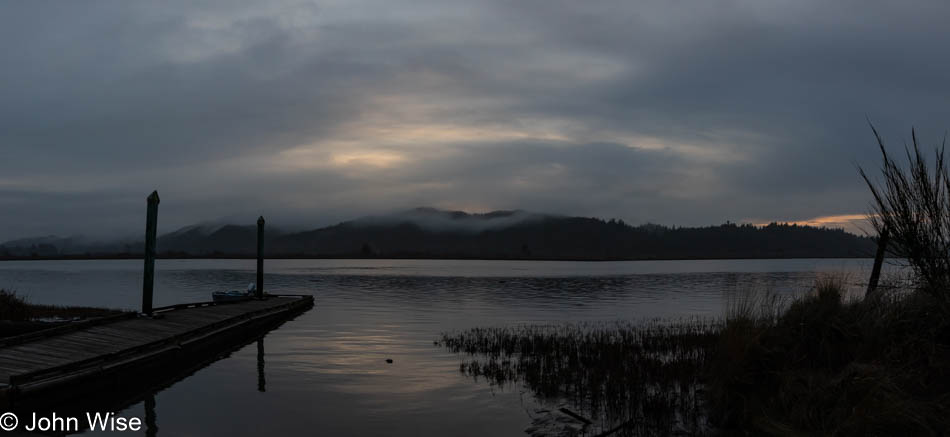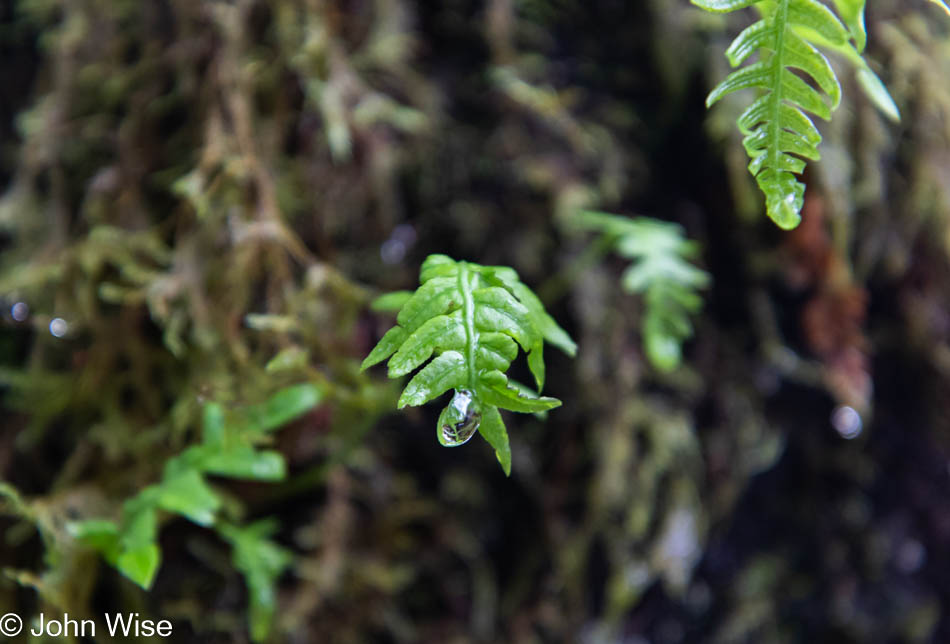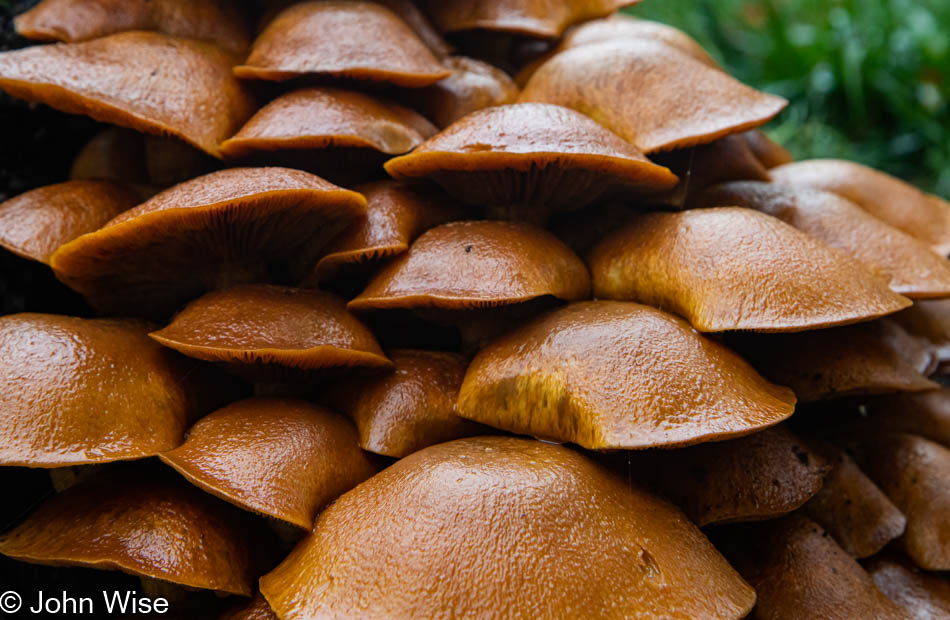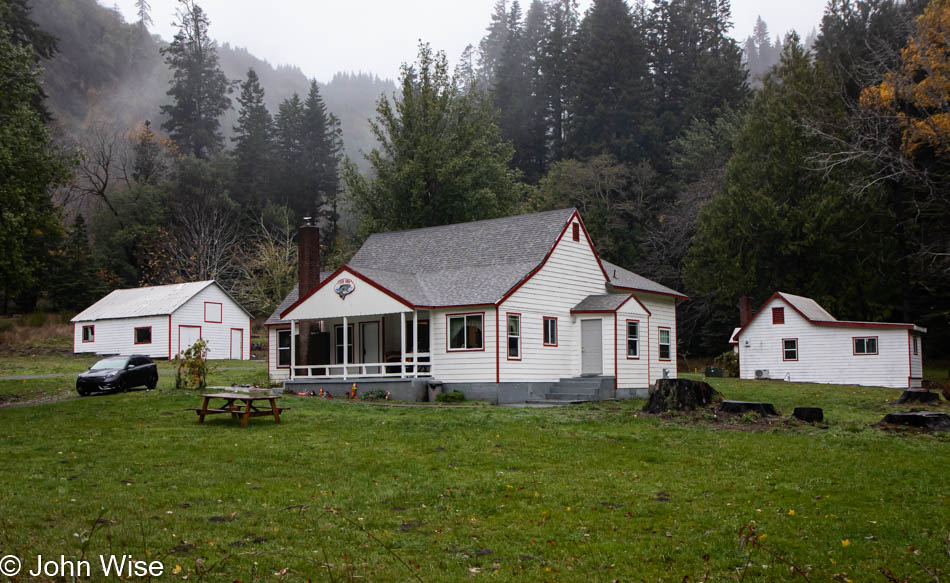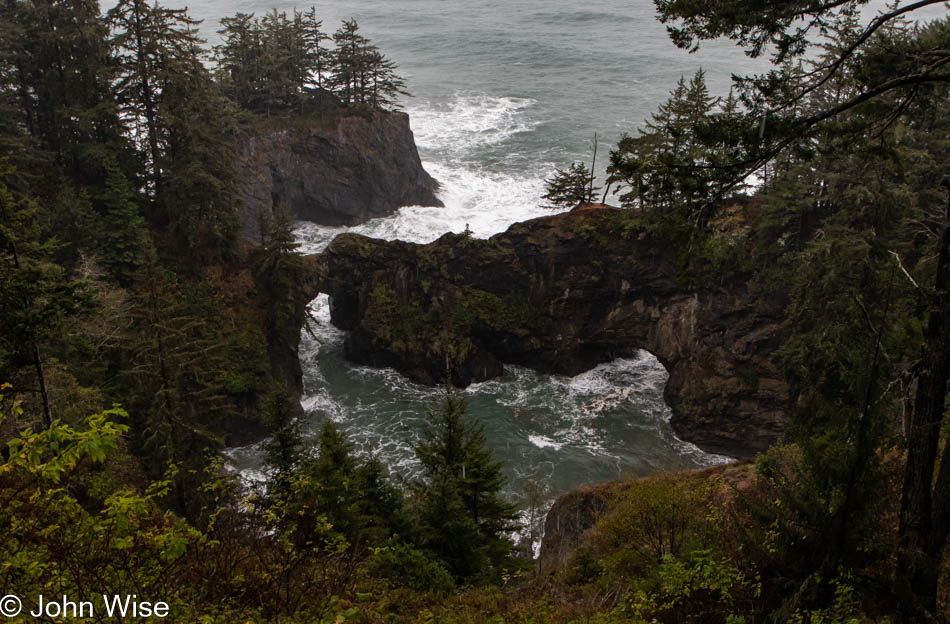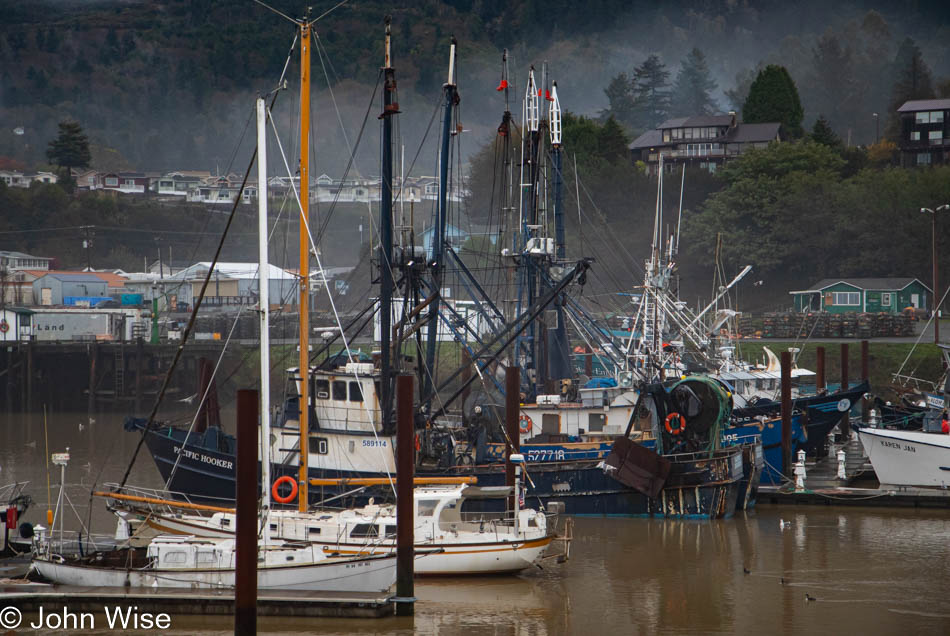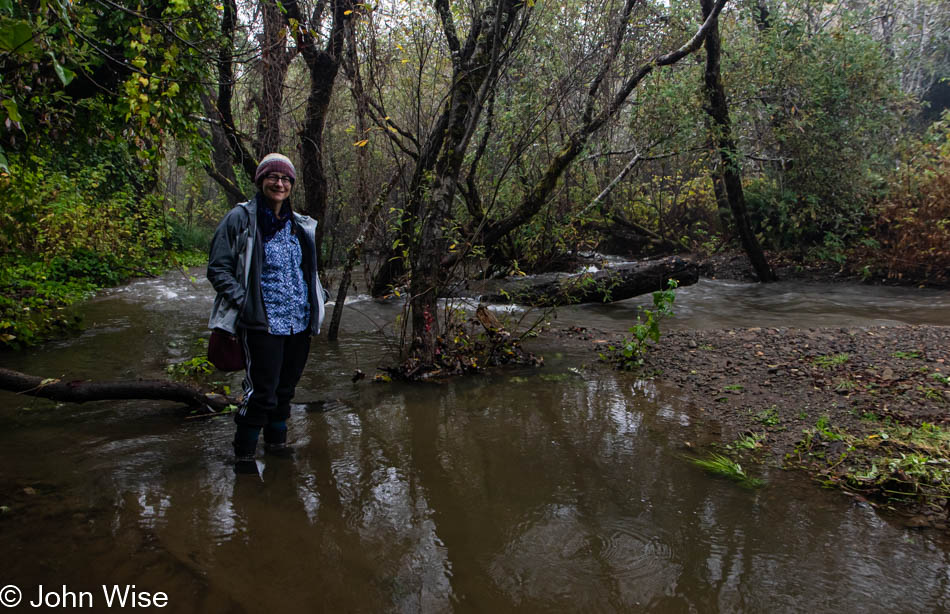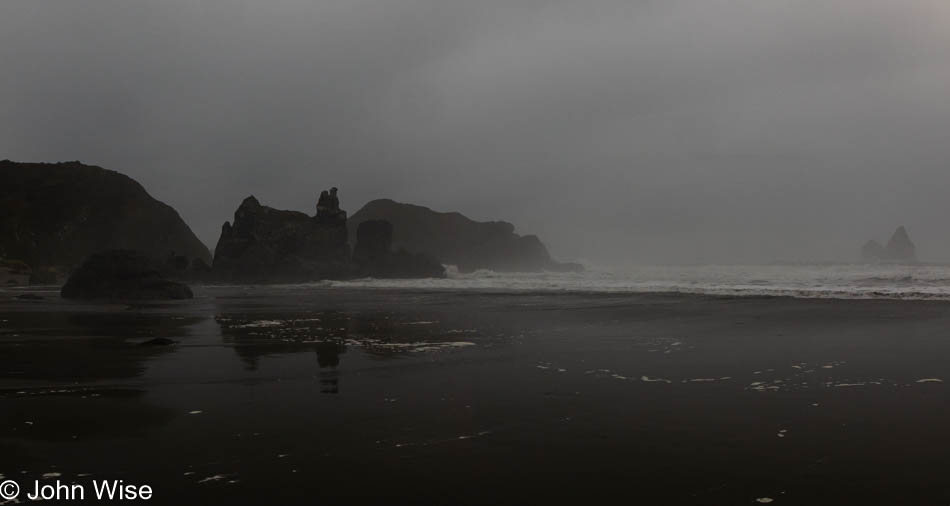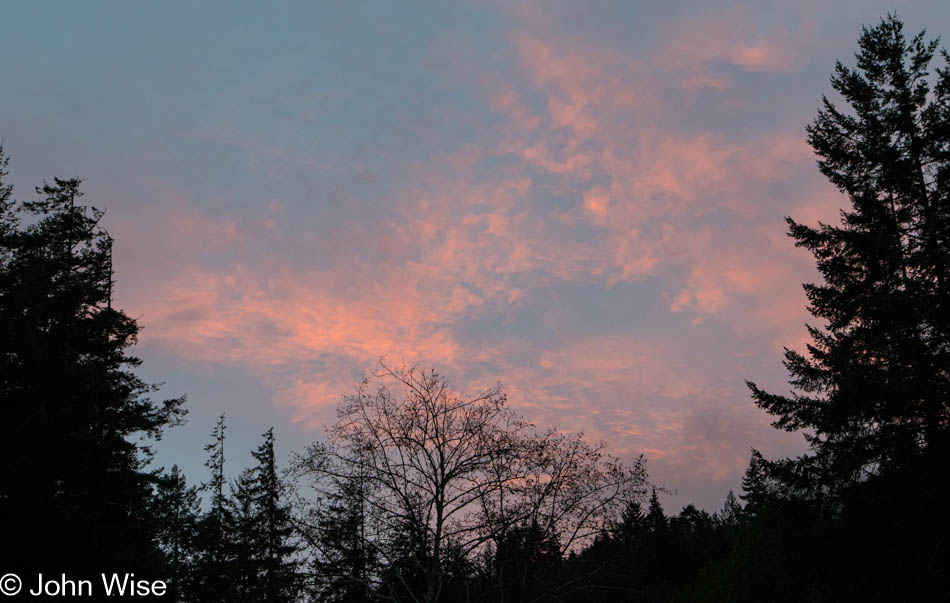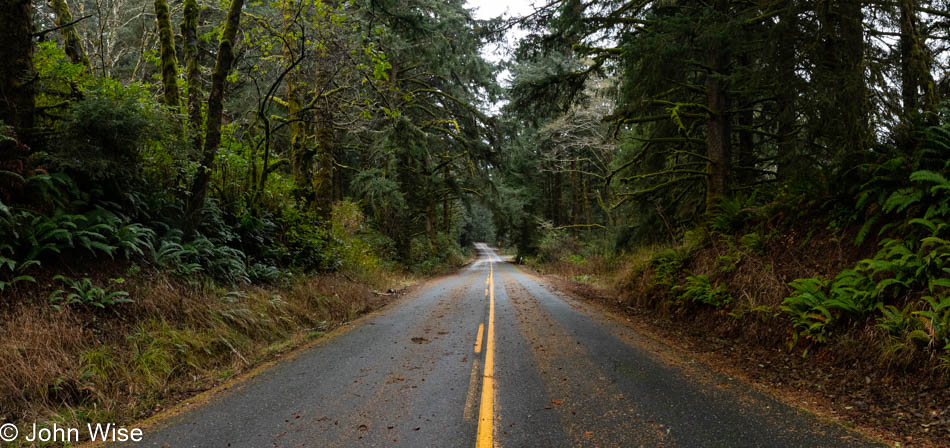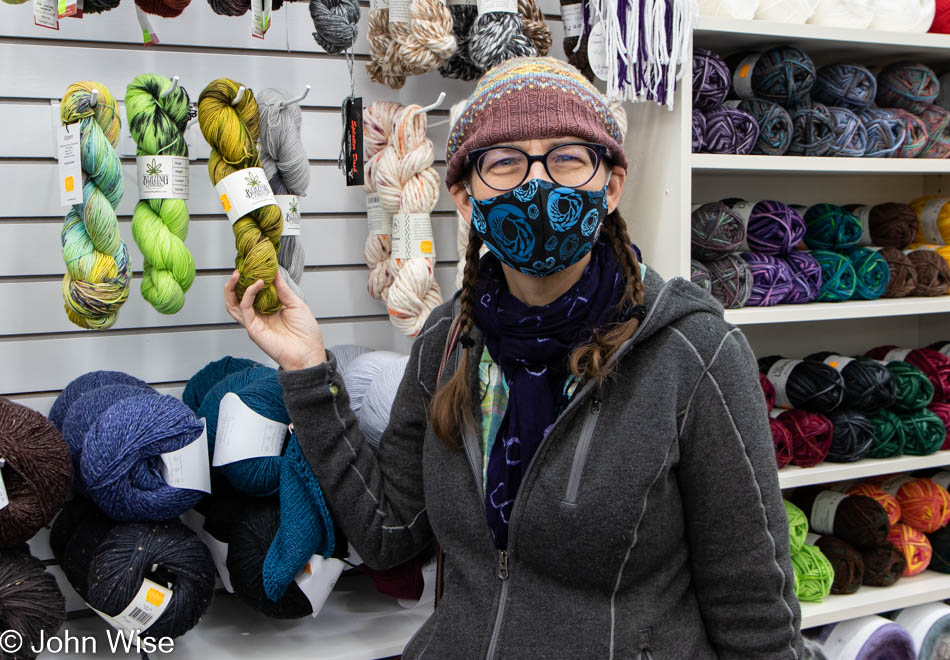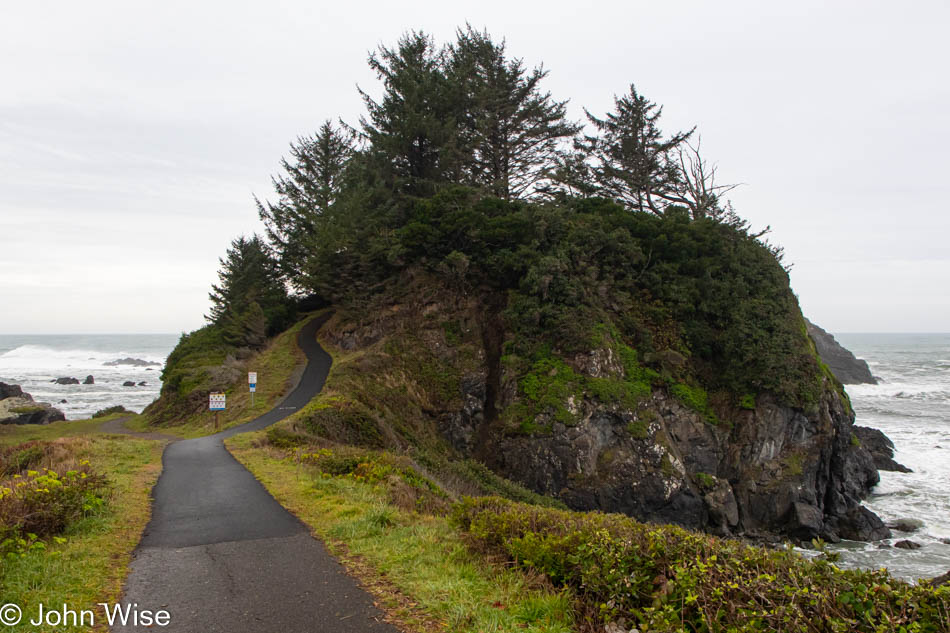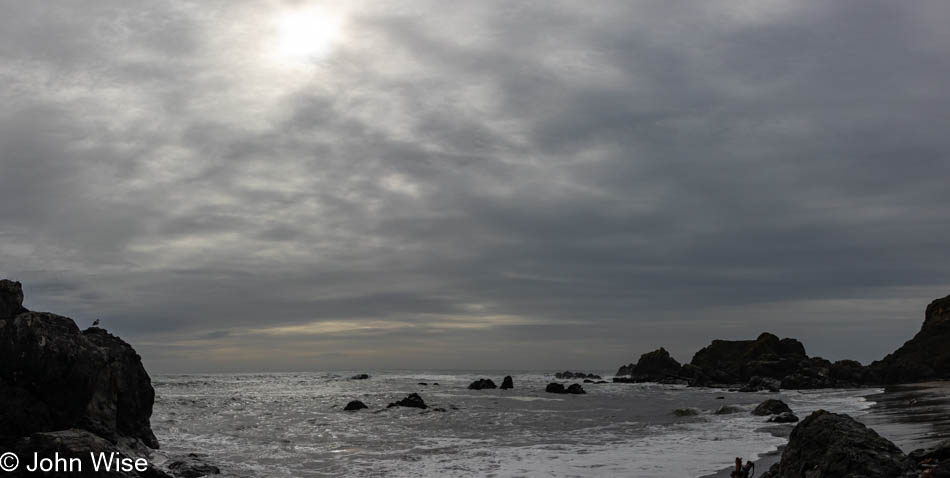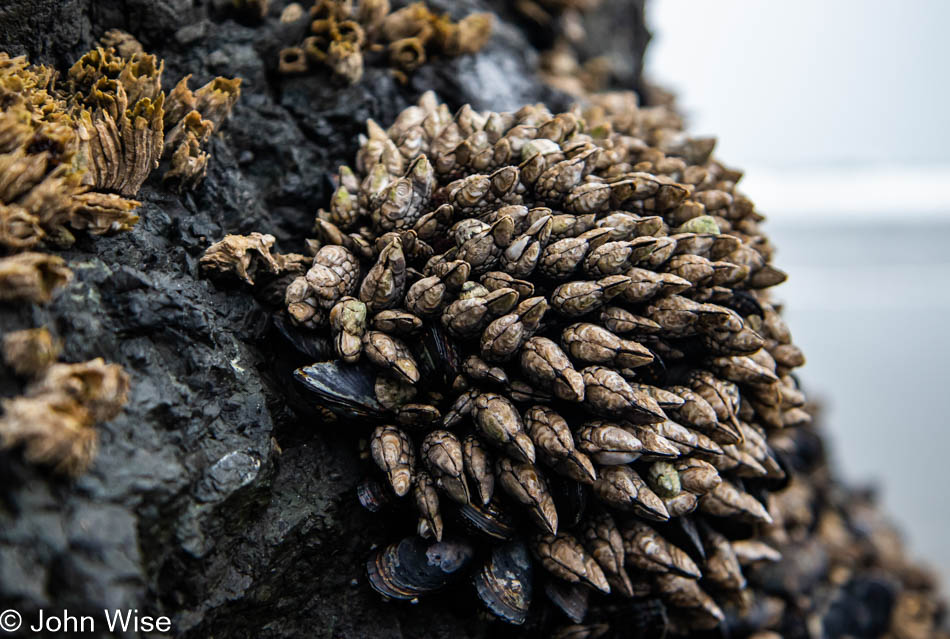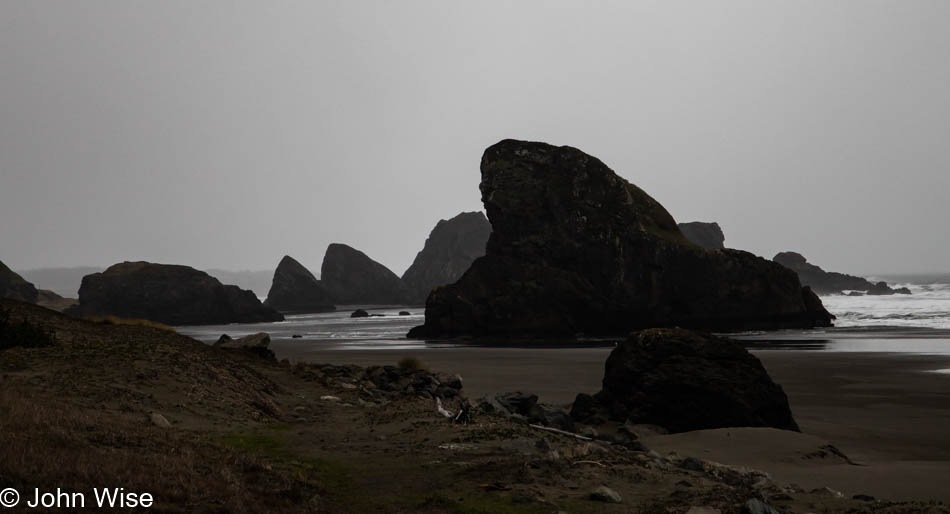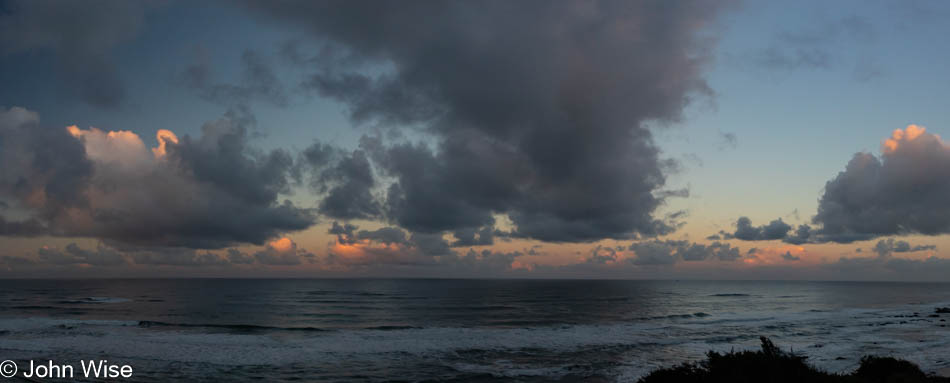
The catharsis brought about by Remote Self-Isolation is therapeutic, restorative, and soothing. Allowing the eyes to find focus at such a variety of distances is an exercise in optic nerve relaxation and de-tensioning of many of the facial muscles. Inside my head, the brain is able to decompress, stretch, and bask in the vastness of clarity from the calcified and atrophying state it was in while it played observer to the circus of news, politics, pandemic, and the rest of the show called 202o. It seems appropriate that as we go deeper into calm and further in our travels, the weather and ocean, too, would be a reflection of our internal being.

When you are thinking it can’t get much better, a rainbow appears and somehow that makes things better yet. Conversely, will I feel so lucky when the day comes when things are horrible, and I’m thinking, “It can’t get much worse,” and then it does?
We are moving slowly today as I fight the impulse to race outside to do stuff. The sense of rarity being in this environment pushes me to seize every moment and experience it as viscerally as possible, but we are here trying to learn what a routine might be like if we were living here. Trying to remain off of any self-imposed schedule isn’t exactly easy, though maybe this contradicts my previous sentence in which I suggested we are trying to explore a different routine, implying a variety of habits. The point is, would we run outside every few minutes to gawk at every new twist in the appearance of things?
Taking our time to get out of bed slowly, enjoying its warmth and coziness along with the view of the sky transitioning from dawn to morning while the surf rolls in, is a delightful creature comfort. Waiting to make breakfast until a bit of coffee has been had and then moving over to warm last night’s beans and dropping a couple of fried eggs on top seems to be luxurious, indulgent even. Then it’s time to tend to the writing that will start to capture the day, but not before we throw open the windows for some Stosslüften (German for fresh air exchange) that has us putting on our sweaters. It is, after all, mid-November and a brisk 46 degrees (8c) that the weather service claims feels like 43 (6 Celsius), so while the ocean view may be cool, so is the air above it.
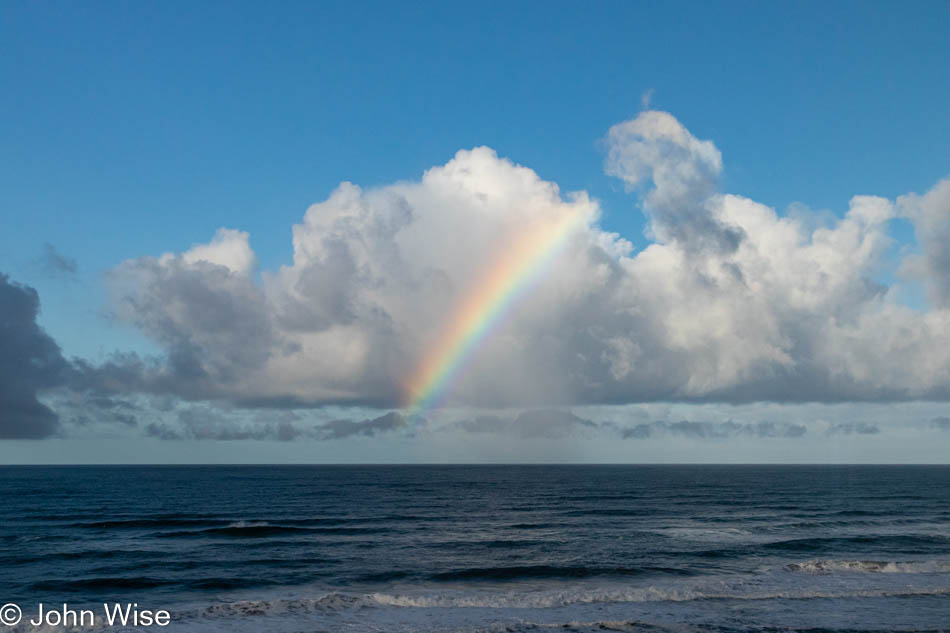
Then, an hour later, a second rainbow greets us. While far from Hawaii, we like to get reminders of our time out on the islands where rainbows are quite the common occurrence. Another half an hour passes while nothing really happens besides me getting lost staring at the ocean. Time for a short walk.
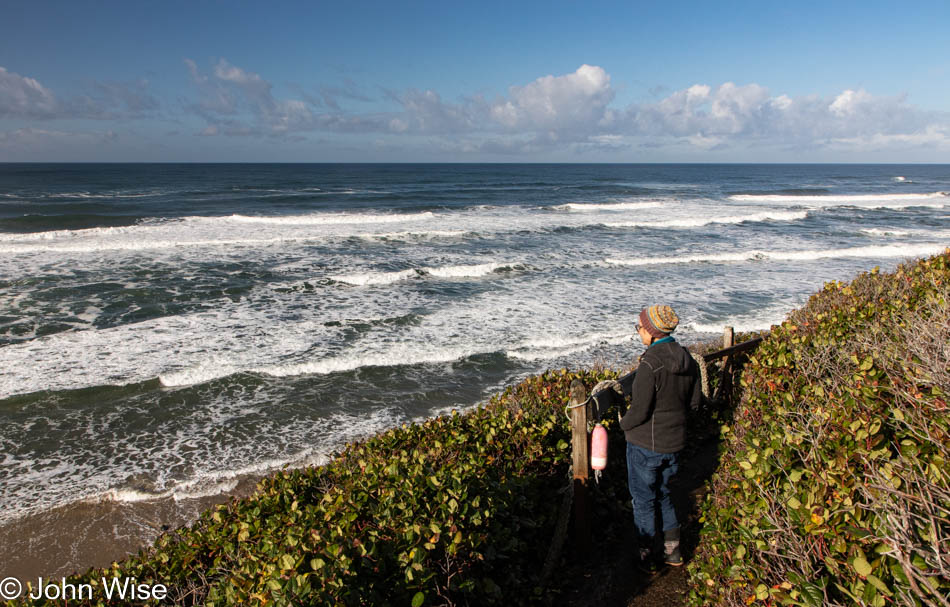
Down the dark, steep trail over slippery rocks, we once again try making it down to our secluded private beach.

Might have made it 10 feet further on our trail to the beach than we had before, but now it’s time to resign myself to the reality that I won’t be traversing the rest of the narrow footpath that’s cut out of the rock face. My fear of the 20-foot drop that you can’t get a good perception of from this photo is too much to handle for my exposure-terrified mind. Tomorrow, the plan is to try a trail from a more southerly point, hike up the beach, and see if my angst can be assuaged with a different approach.
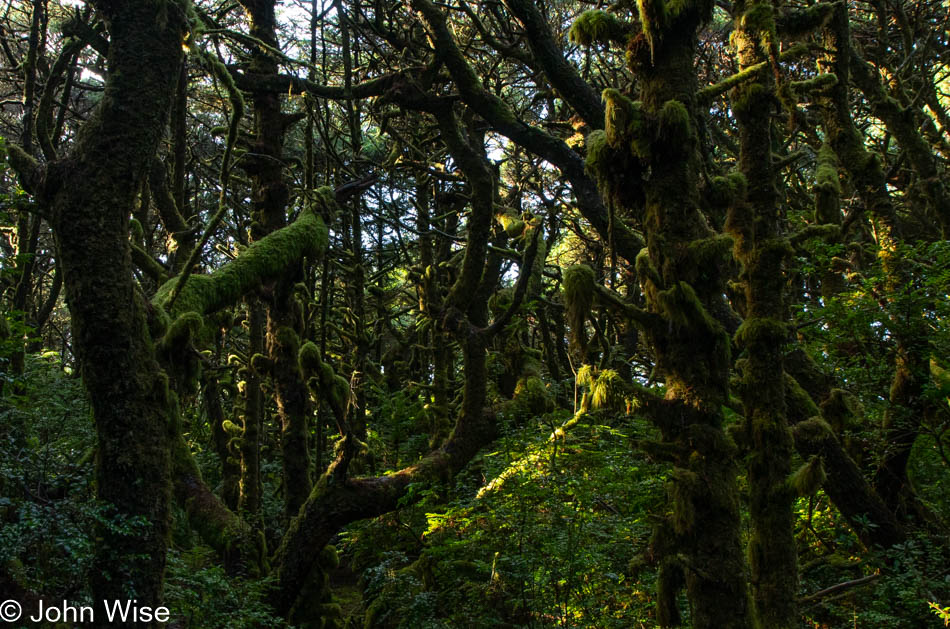
Earlier this morning, while we were admiring the rainbows, I’d talked with my sister Amanda about meeting up at Carl G. Washburne Memorial State Park, about five minutes south of where Caroline and I are staying. It was about 11:15 when we converged in the parking lot across the street. Due to COVID, the campground was closed, but the trails were open. I don’t know how many times we’ve hiked the Valley Trail to the China Creek Loop Trail, but it’s a lot, not quite an infinite lot, but you get the idea.
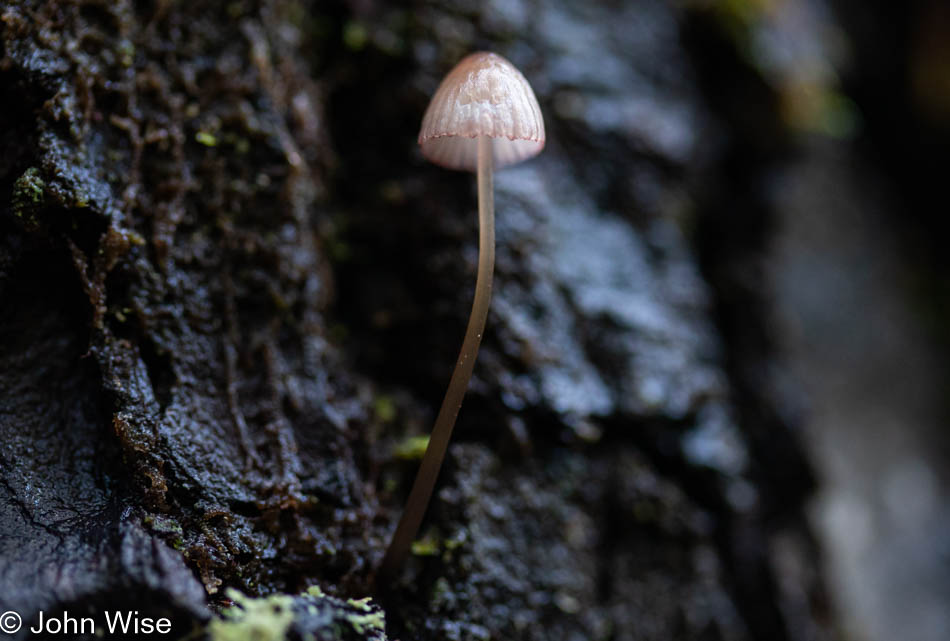
There are spores in that mushroom in front of me that might carry generations to come of mushroom offspring. Maybe there’s a variation in its genetics that could prove meaningful to us when a new pandemic shows up, but in many places, our endless requirements for money demand we take all we can from the earth with no regard for the damage we inflict on it as long as we can conduct commerce. This is a profoundly outdated perspective at this time, as all currency is really nothing more than digital ledger entries that represent abstractions of wealth. Our wealthiest are not worth trillions of pieces of lichen or billions of pieces of gold; they are valued by the representational value of stocks that are certified to have a particular value that changes electronically day by day due to supply, demand, and perception. We could do the same for those who perform labor or make art, but the real goal of putting so little value on some people who dig ore from the ground or clear trees from forests is to ensure there’s a baseline poverty in order to compare the wealthy and what they deserve for that accumulation of accounting figures.
But this walk in the forest is not about economics; it’s about the nature found in this park. In that sense, my writing here is only possible because this land is protected for now, and nobody has been given orders to come and erase this mushroom so they can pay rent on their tiny home, but in many parts of this state, that is exactly what goes on. Of course, there are not enough of us who even want to come out to these wildlands to witness what’s at hand. The flip side of that is that we cannot build another Grand Canyon or Yellowstone, so the point of diminishing return, when the demand is too high for natural places, means the experience can be lost when too many of us want to see these beautiful lands.
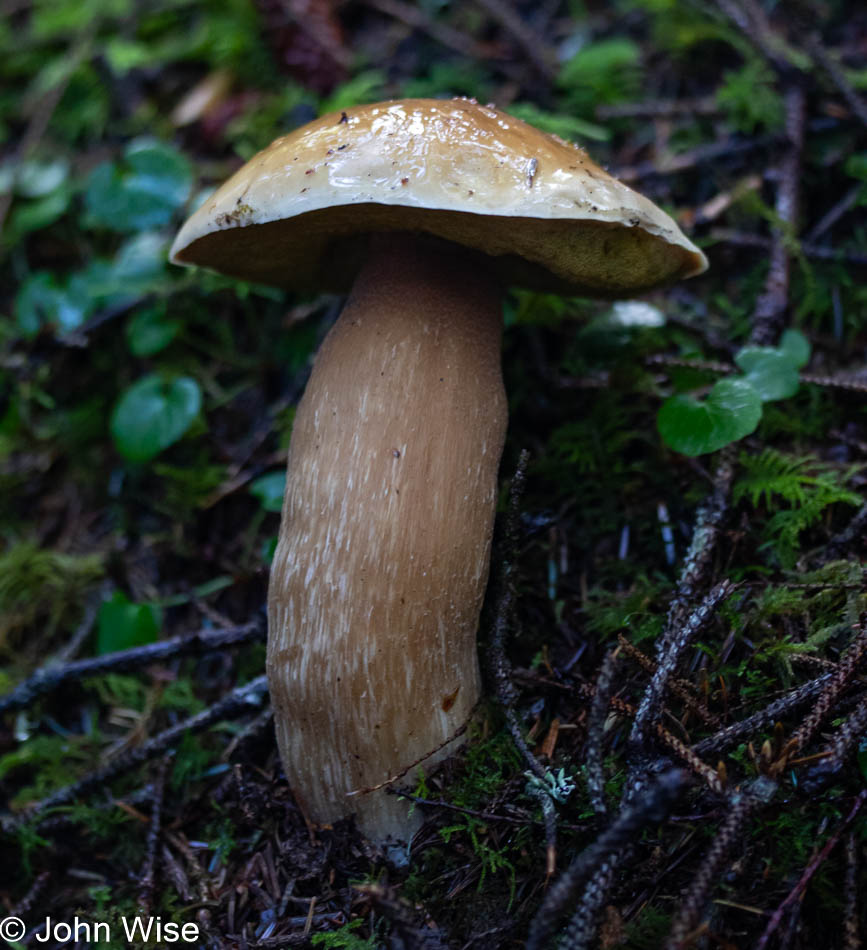
But we must find a way to strike a balance in our pillaging of the unseen world and somehow educate the masses about the importance of unspoiled places, which are outside of their purview, and simultaneously not denying someone who lives in the area the ability to feed and shelter themselves and their family; we ensure that nature continues to have the opportunity to create sights such as this.
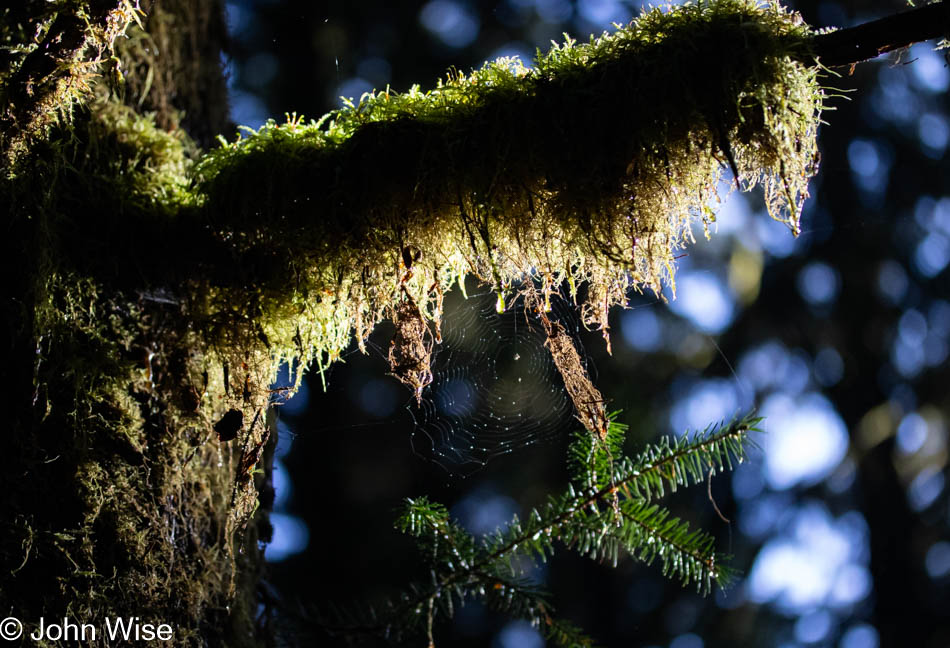
Bacteria, fungi, spores, insects, food, oxygen, plants, wood, carbon sequestering, moisture capture and release, heat transferral, evolution, and an insane amount of genetic diversity that’s what exist in this photo, along with a likely long list of things I don’t have the knowledge to share. While all of this is right here, just up the road, the forest has been turned over, stripped clean, and is now on fire, as those reaping the economic reward of doing such a thing turn every last bit of life into profit. It’s sad that nothing, absolutely nothing, about what I’m writing is new. There’s no original thought in these words, only the futile wish that maybe they reach someone’s mind at a time they are able to work with them in a way I cannot. Think of my musings as just someone else attempting to create a base structure of paint that will be utilized a thousand years later by Leonardo da Vinci to paint a face that will be cherished for the next 500 years.

Can you not see the art of the infinite in this fern? Stop a moment and consider the root that nourishes the plant above it with minerals extracted from the soil that is made of other decaying matter from bacteria to insects and other plants. The roots are also the conduit for getting water to the rest of the plant. The leaves are green due to the chlorophyll that more easily absorbs sunlight with pores called stomata, so carbon dioxide can enter the thin leaves and fuel the action, finally releasing oxygen. This inherited process first occurred in blue-green algae and kickstarted the creation of our atmosphere, but we don’t look at plants as having a long lineage of familial relationships; we see them as food, ornaments, or tools that lend themselves to our comfort. This should be a respectful symbiotic relationship, but most of us in modernity are oblivious to this important fact.
At an even deeper level is the genetic data, which acts as the blueprint of how nutrients are drawn from the earth and energy from the sun are harnessed to assemble the atomic and molecular structures that will build cells that can be chained together in order for the shape of the plant to form. While it may seem obvious, the roots do not have lips and mouths for drinking water from the dirt. They use osmosis, where cells of tiny hairs on the roots are tuned to absorb ions of minerals and water. As a refresher for those who slept in science class, as I might have, ions are the charged atoms and molecules that make up the minerals and water.

About 350 miles (560km) from where we are right now on the Oregon Coast is the Malheur National Forest and the home of Armillaria ostoyae. The honey mushroom, as it’s better known, is the world’s largest organism; its nickname is the Humongous Fungus. The mushroom pictured is not of that family, and I’m only pointing this out in keeping with my theme of the infinite. You see, that organism is incredibly large, as in about 2,400 acres or 3.7 square miles (9.65 square kilometers) and is estimated to be over 2,000 years old and maybe up to about 8,600 years old.
I’m sharing this because as we entered the China Creek Trail here at Washburne State Park, something became quickly apparent: with the lack of tourists plodding through this corner of the rainforest, there were many more mushrooms still standing. For some reason, people enjoy kicking over mushrooms. Then, when we arrive, scenes such as this feature the broken and decaying mushrooms that appear tragic and sad, vandalized by idiots. The nature of our world is not infinite, but the knowledge and beauty that can be extracted could be unless there’s not much left of its diversity.

The next thing I noticed was that the moss covering the ground was not as plush as in previous visits. I’d attribute this to a lack of rainfall. While the area has had nearly 3 inches of rain this past week, it was a dryer summer with more fire activity in the surrounding areas. Could the dryer conditions have anything to do with the ever-growing amounts of land that are stripped of its bio-diversity, requiring years of restoration? Heavy vegetation and thick ground cover hold moisture, which is slow to evaporate; as that water evaporates, creating vapor, clouds form, and the cycle of replenishment is at work. Take away the glue from this equation, and nobody should wonder why things are dryer.
Similarly, in Phoenix, Arizona, we have removed the majority of open spaces and replaced them with asphalt, concrete, cinderblocks, homes, shops, and glass. We now have a heat island where the nature of monsoons is quite different than it was 30 years ago. Walk around a Phoenix neighborhood near a nature preserve in the evening or early morning, and you’ll be shocked at how the temperature flowing off the open land can be 3-5 degrees cooler than the area packed with homes, streets, and cars. Our environmental intelligence is lacking and needs its own restoration work.
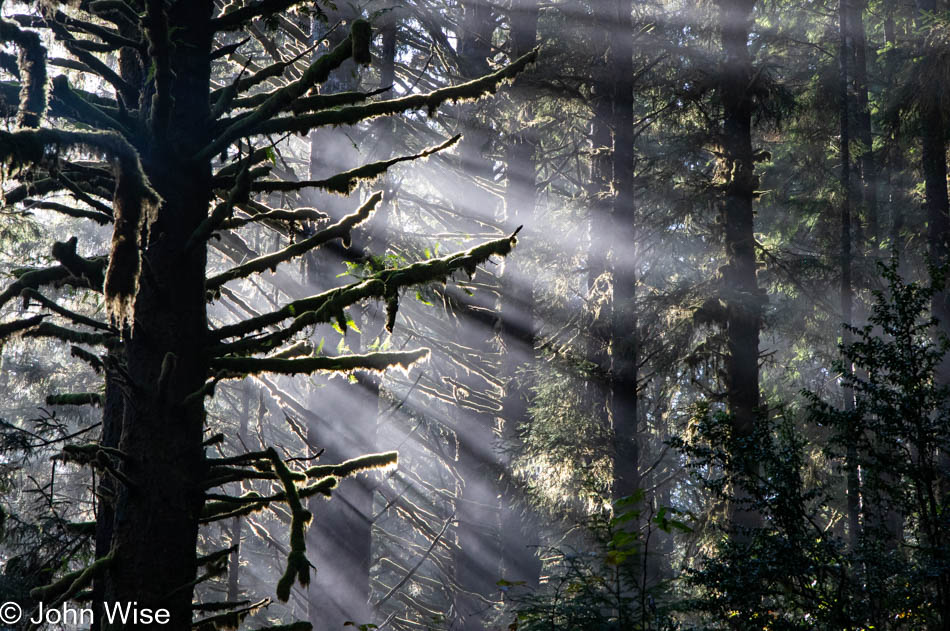
This is not smog or smoke being illuminated by the sun; it is water vapor lifting out of the forest. I used to think this was a rare phenomenon as I never saw it in the forests of southern California where I grew up; I can’t remember seeing it in German forests either. When I did see it, I was usually near a campground, so I often associated it with campfires and their drifting smoke. This scene is now accepted as being absolutely common, as I’ve seen it so very often, especially right here in this corner of Washburne State Park. I’m fairly certain I could have seen it in other places, but tend to think I wasn’t as aware of wanting to see all the details that were present to my senses, but I was busy ignoring them as I had places to be and was moving through more focused on myself instead of the nature I was temporarily within.
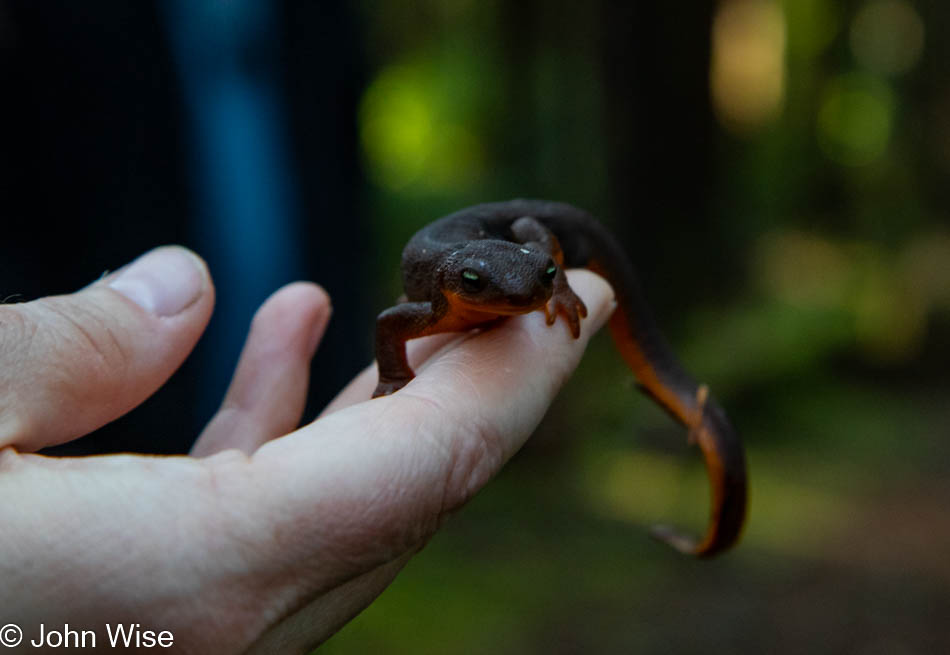
Have we seen you before? Have you been held by my wife on a previous visit? You look familiar, but that may be due to our inability to appreciate the subtle differences that newts can see between each other. Walking through the rainforest, one should be mindful of small movements underfoot as these slow-moving creatures traverse the moist ground. By now, we know not to pick them up as they release a toxin when under stress, but silly us want to believe they remain calm when held by a creature that means them no malice and simply wants to appreciate their beauty and incredible eyes. Regarding having seen this guy (gal?) before, the newt lives for between 6 and 20 years, so it’s not impossible that we’ve smiled upon this one before. Have you ever seen a newt walk? Click here to watch an example, but be careful searching for “Newt Walk” as you may stumble upon the Naked European Walking Tour instead!

This is the halfway point of an infinitely long blog post. I have reached over 2,200 words for the first 14 photos that accompany this day of recollections from our time of Remote Self-Isolation. I don’t know exactly where this will go and how I’ll maintain my wordiness, but like the mushroom holding a lifetime of water for some creature or other, my brain still has words in abundance I could choose to share. Maybe you are thinking, “These photos hold a lot of beauty while your words just go on and on.” Well, in that case, please know that I’ll not be hurt by you scrolling through the rest of the entry so you might see how our day appeared instead of learning whatever it was I thought important while we were strolling through a rainforest.
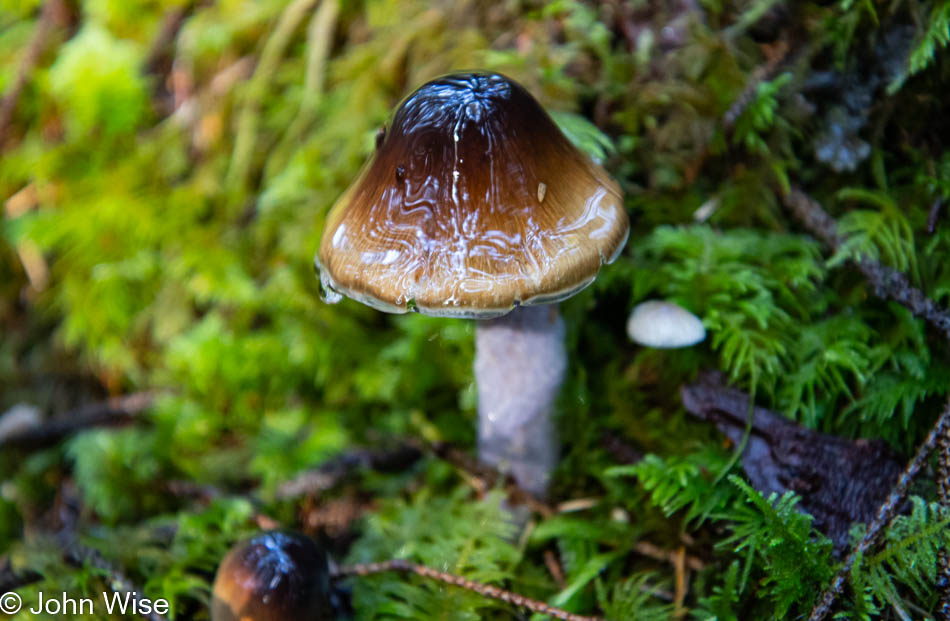
One mushroom holds its water within and the other on its surface. The idea that the surface tension of this fungus is so great that it holds a sheen of liquid clothes is amazing to me. The subject of wetness brings me to my forgetfulness in remembering to bring kneepads on these visits to wet forests. It never fails that I leave with muddy pants as I give in to the need to kneel on the earth to snag a photo that brings me down to the height of moss and mushrooms. Come to think of it, I’d do well if I bring my tripod as holding the camera still long enough to take a photo in low light is never an easy feat, but this then would require us to bring even more stuff than we already do. Just remembering our curiosity and flipping the off-switch to current events is a monumental task. Shiny mushrooms in a rainforest, who knew?
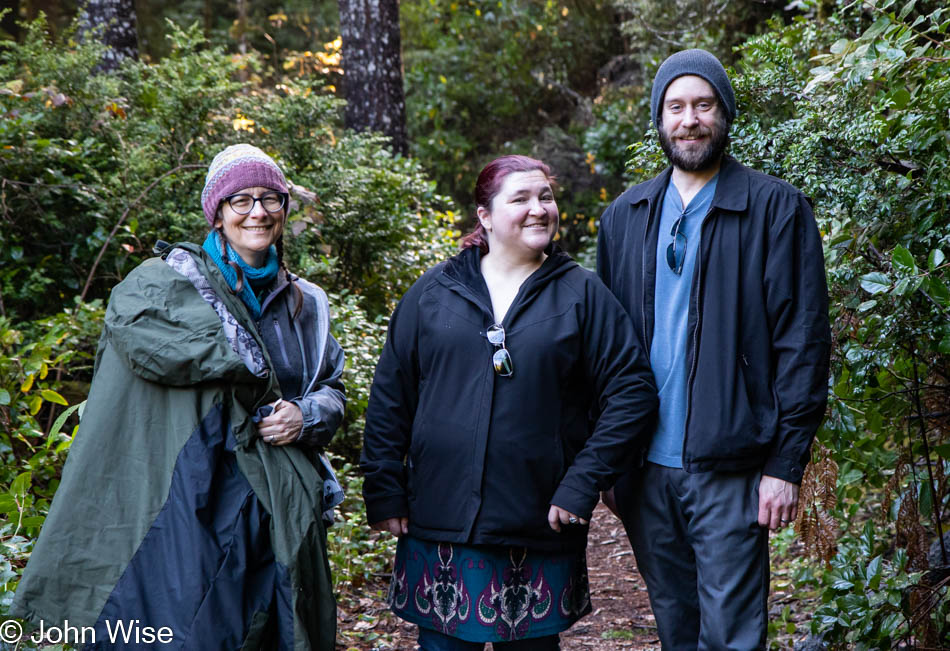
You shouldn’t have the impression that this blog post is being written as we go along here on the 19th, as at this point, it’s now the evening of the 20th, and returning to it after a languid day of dawdling, I have to admit, is a task that I’m not really up to. That doesn’t mean I won’t try my best, but honestly, I’d like to head off to sleep. Anyway, back to the story.
After a long pause, I can only come up with nope, can’t do it as my old brain just won’t cooperate; it’s stuck in done and finished. So maybe tomorrow, which would actually be the 21st, I’ll catch up with this entry from the 19th, tackle today, the 20th (which, compared to the blog post you are reading, is still the future), and not fall behind regarding tomorrow’s post which is even more in the future. Then again, you can’t be reading this on the day it happened as it’s not been posted yet, and it could be weeks, months, or years after the events memorialized here that you have discovered my missives heavy on words and photos with nary a moment of video.
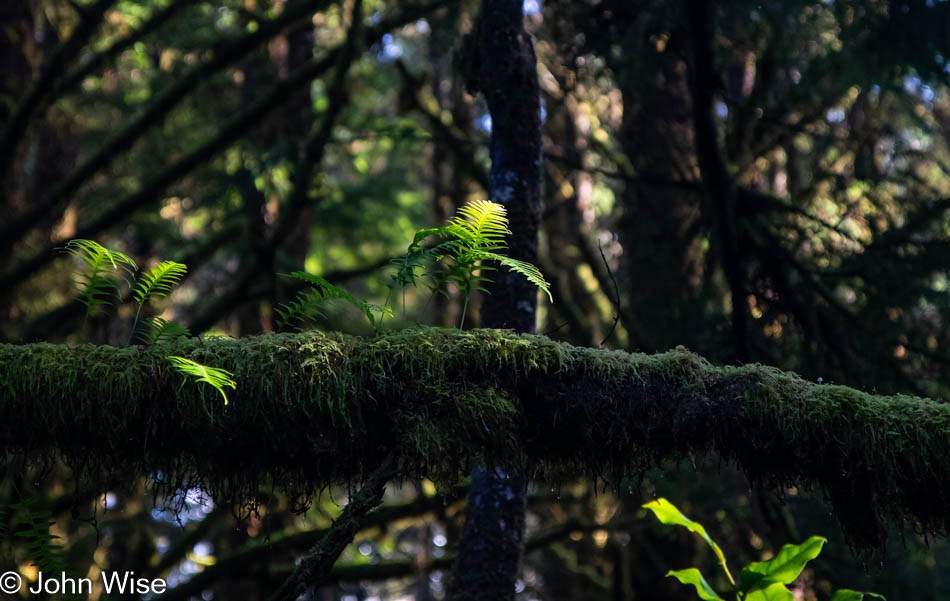
Grabbing a spotlight in the sun on a branch high above, this fern has left its terrestrial home for a place closer to the stars. What is it about plants growing on plants that are so intriguing? I believe the first time I can remember seeing this was down in the Redwoods National Park and then up in Olympia National Park in Washington was another standout moment in plant parasitism. Or, as I would rather think of it, symbiosis. Come to think of it, we are the actual parasites on the plant life here on Earth.
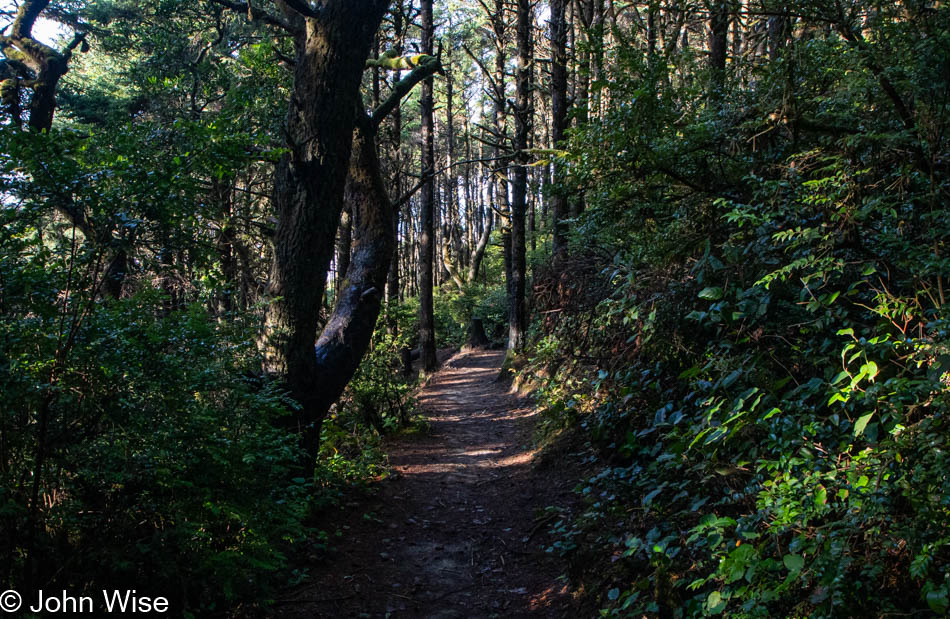
The path out of the woods has me thinking about our need for a way out of the immature intellectual woods humanity is cowering within. COVID is to us what we are to the rest of the planet; from the sea below to the sky above, no life is safe from our onslaught. We kill with abandon, despoil with relish, and exterminate with nary a care because we are the HOMINID. The path ahead can take us from the darkness of our primitive natures, or we can continue our rampage pretending we are the Earth’s normal. We are not normal, nor are we ultimately good for life at this time in our evolution.
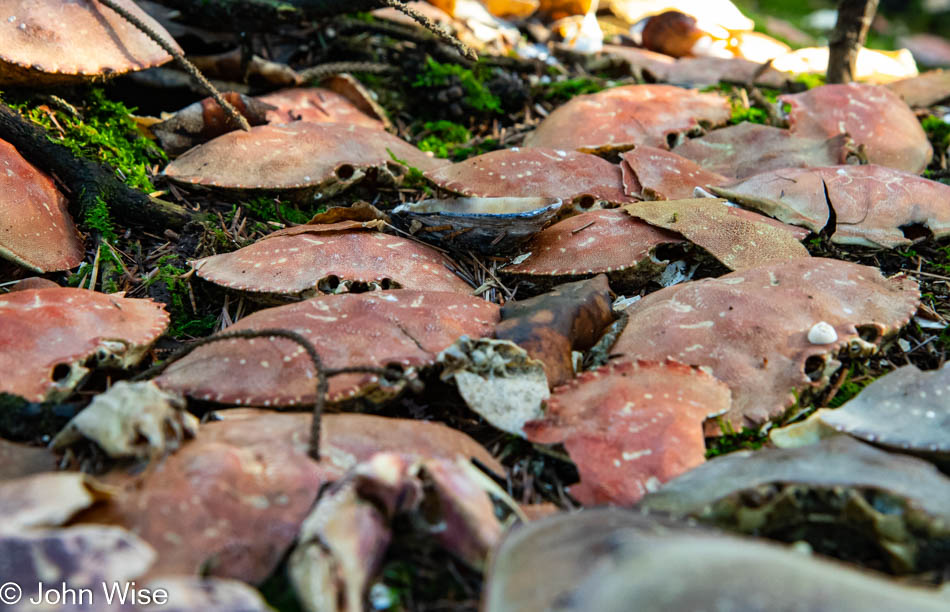
From the death cult of humanity, we celebrate the macabre, even in beautiful places. The Hobbit Trail, a connector segment from the rainforest trail we just left on the other side of the road, brings us to the beach. But first, we must pass through the gauntlet of gutted crab shells that have been amassed next to the trail on a sand shelf a few feet above the trail. Hundreds of crab parts are neatly organized as though some kind of ritual passing of dead crabs into the crab netherworld had been taking place, celebrated by some Druid culture that had fetishized these crustaceans.
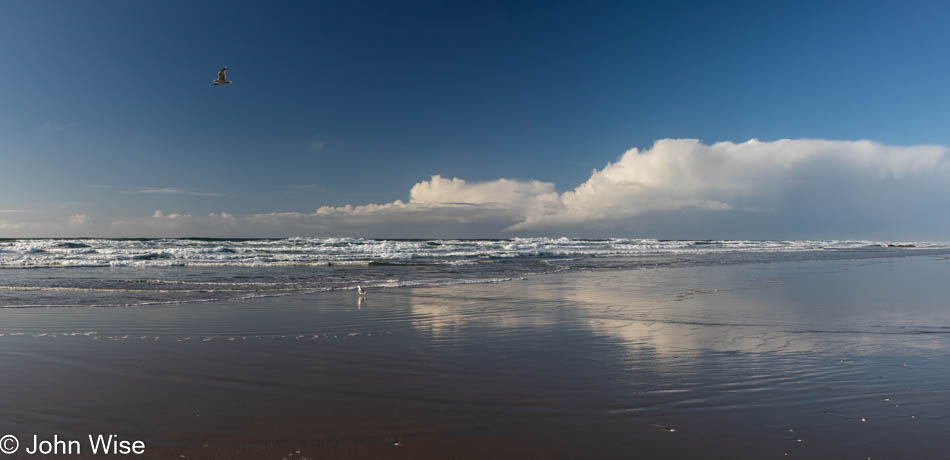
Out in the open, with clear minds, we can choose to celebrate life and all of its inherent beauty. We could decide to do our best to be a sustainable, clean, do-no-harm species. We could each use the power of our minds to do better instead of relying on the smarter people “out there” who will make these decisions for us. Think about this mirror image of the clouds reflected in the wet sand; we are seeing beauty above and below*. Well, we are in some way similar: If we are the worst representation of what humanity can be, we’ll see that reflected in much of what’s around us. And when our anger and greed know no bounds and there’s not enough chaos in our immediate vicinity, we’ll take our personal war to others.
* Navajo Blessingway prayer: In beauty, I walk. With beauty before me, I walk. With beauty behind me, I walk. With beauty above me, I walk. With beauty around me, I walk. It has become beauty again.
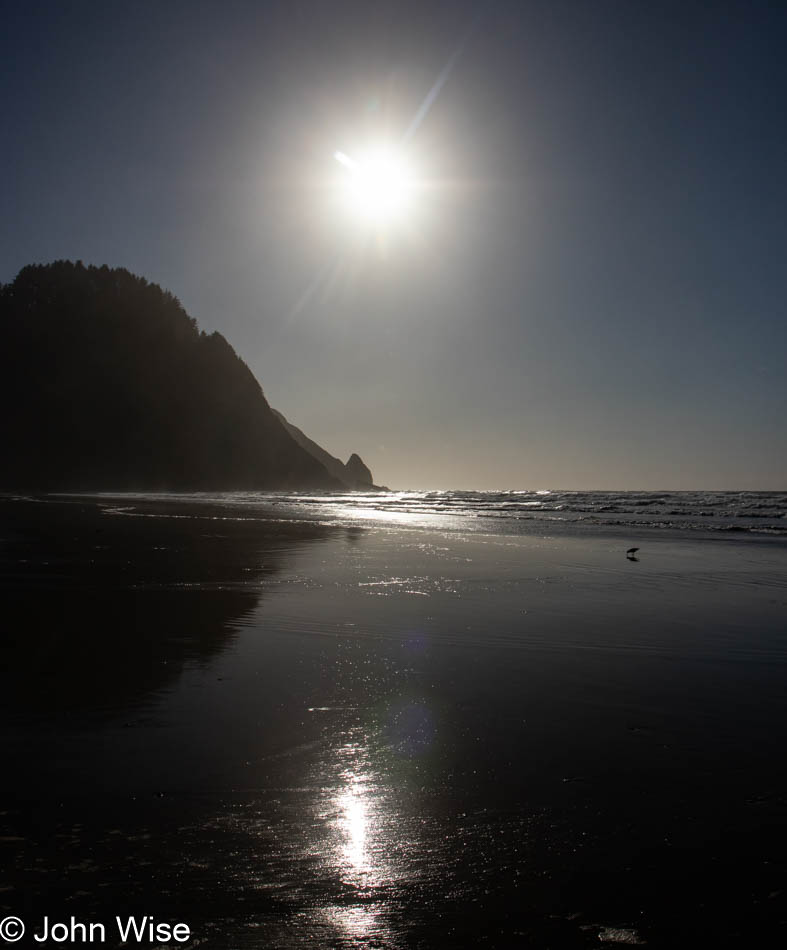
A large swath of our population is feeling like fish out of water. They have not adequately adapted to walk on the technological landscape that is our new reality. Those people are being whipped into a frothing, seething wave of anger and may ultimately need to take their personal war of frustration out on others, whom they can make feel their pain. Those of us who have made the Tiktaalik-like transfer from sea-to-land-to-electrosphere (read Neil Shubin’s Your Inner Fish) are doing okay, but we are leaving behind a vast part of our brothers and sisters, and they are growing seriously angry.
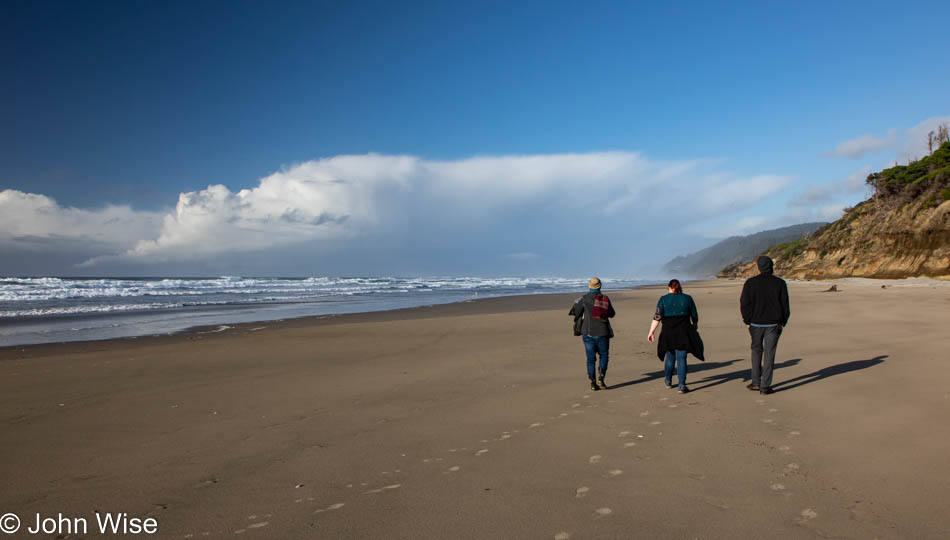
We cannot just walk away from all of our responsibilities and build ourselves shelters on islands away from the carnage our barbaric practices have left behind. Our need to self-isolate is indicative of an uglier issue that we have abandoned one another, and now we can’t face them due to the growing guilt and awareness that we are not good people. We are selfish, petty, vain, and arrogant, married to a glamourized economically driven piety where everything is justified as being good as long as it creates wealth.
Changing this requires a conversation that we cannot have as our belligerence stops us from recognizing that we’ve soiled our own bed. We’ve failed one another with our acceptance of mediocre education as long as one is a consumer genius. It’s better to be popular than good or smart.
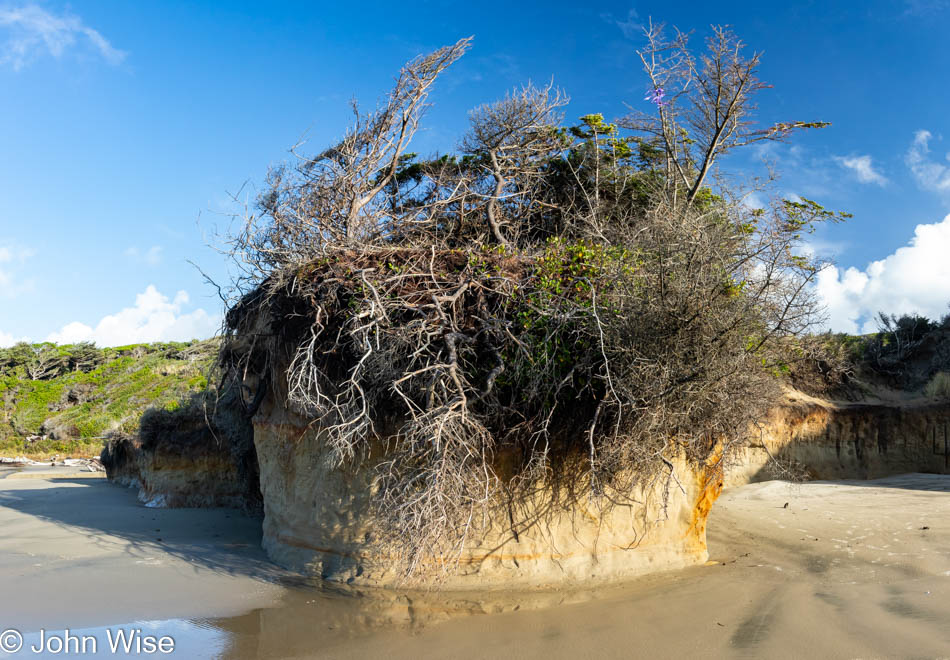
When the last two people are left battling over this tiny island of land, we will extinguish our legacy while the bacteria that have been on earth 14,000 times longer than our species will be free to start all over again with a new attempt at spreading life. Just because it’s 2020 and we have smartphones does NOT mean we ourselves are smart, but then again, who in their right mind would want to listen to some idiot blogger proselytizing on behalf of nature and his own narrow understanding of what it means to be human?
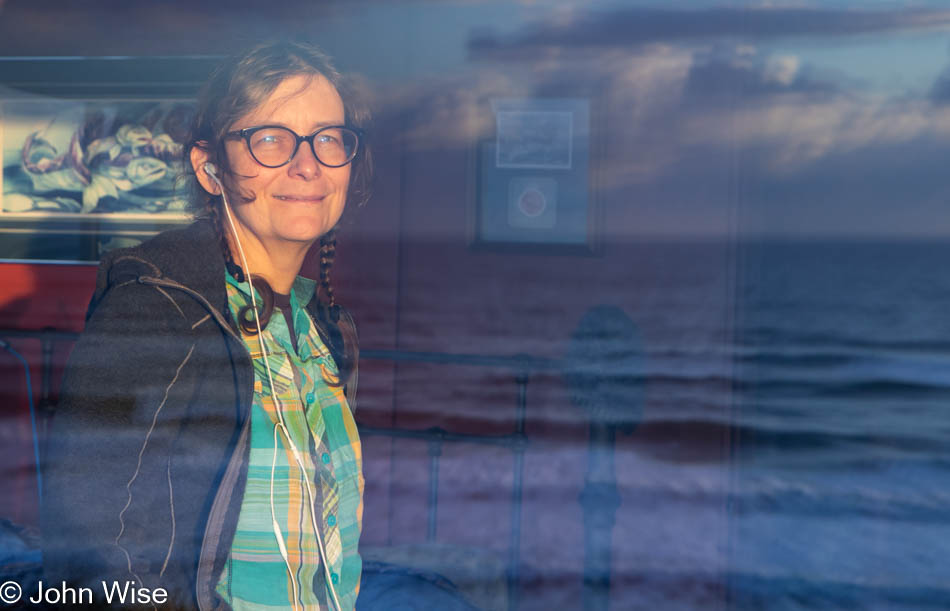
At least there is love, the stars, and the constant motion of the sea. These are the three most meaningful things for my soul. Of course, I’m referring to my living soul, as my jury is still out if there’s an eternal soul. Funny how it’s okay to be uncertain and questioning about everything else I wrote above, but this whole question about the domain of God is beyond reproach. How are we able to have such firm beliefs in the things that are absolute unknowns while we can throw our hands in the air regarding our responsibility to a planet we credit the same God as having created?

If one day or evening I do, in fact, encounter God, I am certain it will not be a mirror image of the ugliness we are as a collective. God will be love stretching into the stars and coming in waves of humility that it had created such a hostile species that would be so arrogant to claim it had been created in God’s image.
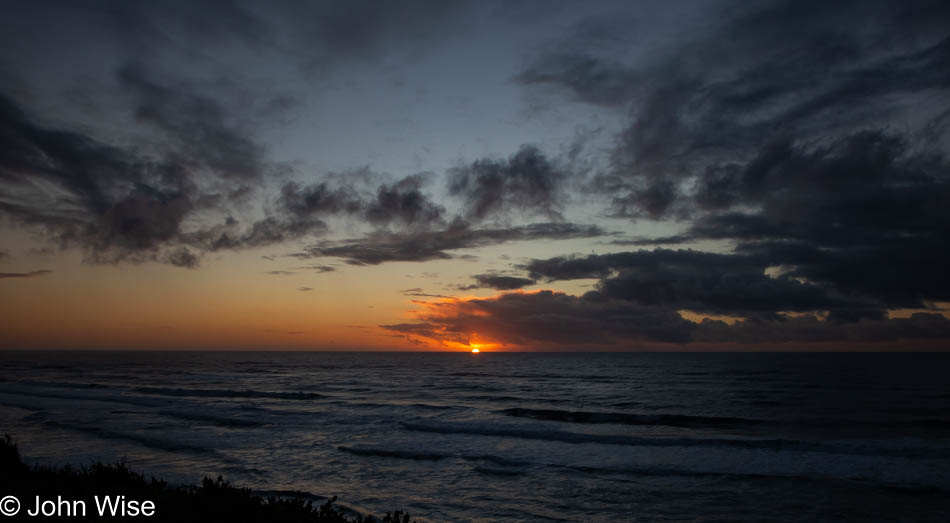
The sun is setting on our lives every day, and the time is short that we can remove ourselves from the self-isolation of living in our chosen darkness. The cycle of things will continue regardless of our will or lack of it, but large numbers of our fellow humans will have to remain in their suffering if we don’t act on what we claim to believe in.
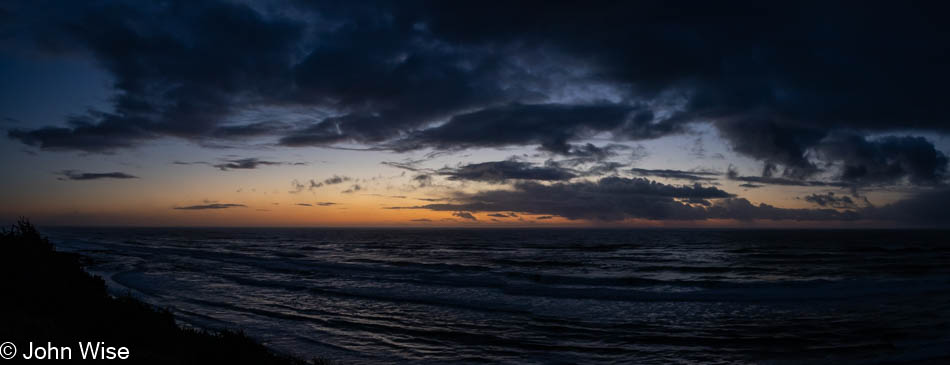
I love these sunsets by the ocean, and I love them even more because I’m experiencing them next to my best friend, Caroline. As the last remnants of a golden horizon fade away, I know that an infinite field of stars is about to shower me with ancient light, demanding that I again recognize my good fortune to be here witnessing it.
